
VISA TYPES: ( Issued by Embassy of Nepal )

Procedures for applying visa:
All the individuals intending to travel to Nepal need to submit online application for the visa in the portal of the Department of Nepal Immigration.
- For online application from Nepali Missions abroad , please go through the following link: https://nepaliport.immigration.gov.np/onlinevisa-mission/application
- For online application before arriving in Nepal from Nepal Immigration , please go through the following link: https://nepaliport.immigration.gov.np/online and online application after arriving in Nepal from Nepal Immigration , please go through the following link: https://nepaliport.immigration.gov.np/ and apply at the Visa-On Arrival section.
- The printed copy of the visa form generated online need to be submitted at the Embassy along with the hard copy of the passport and its photocopy, visa copy of India/copy of the relevant document.
- The required fee should be paid in local currency at the Embassy.
- After following the due procedures, the Embassy will issue the appropriate visa to the applicant. For tracking the status of the visa application, follow the link: https://nepaliport.immigration.gov.np/visa-application-track
- Please go through the following link for more information on Nepali tourist visa: https://in.nepalembassy.gov.np/visa/
- Please go through the following link for further information on Nepali immigration: https://www.immigration.gov.np/
- For any queries on the issues related to Nepali visa, please kindly contact the Consular Section of the Embassy at phone no. 01123476212, +232, +221.
TOURIST VISA FEE
VISA FOR INDIAN NATIONALS:
Effective from 1st October 2000 an Indian citizen over the age of 10 years travelling between India and Nepal by air would have to keep in his possession any of the following documents to establish his/her identity as an Indian citizen.
- Valid Indian passport; or,
- Voter ID issued by the Government of India.
- Emergency certificate issued by the Embassy of India in Nepal.
VISA FOR OTHER NATIONALS:
Nationals of other countries can apply for visa at any of the Nepalese missions abroad. Visa can also be acquired from the points of entry into Nepal.
However, nationals of the following countries should get visa prior to their arrival in Nepal:
- Afghanistan
VISA FOR NATIONALS OF SAARC COUNTRIES:
Nationals from SAARC countries other than India will be issued gratis visa for up to 30 days for the first time in a year.
DOCUMENTS TO BE SUBMITED BY HOLDER OF REFUGEE TRAVAL DOCUMENT WHILE APPLYING NEPALESE VISA:
- 3. If you are visiting Nepal to meet your relatives, please provide the following details:
- i. Name of relative
- ii. Address of relative
- iii. Nationality of your relative
- Copy of the Travel Document.
Security Alert May 17, 2024
Worldwide caution, update may 10, 2024, information for u.s. citizens in the middle east.
- Travel Advisories |
- Contact Us |
- MyTravelGov |
Find U.S. Embassies & Consulates
Travel.state.gov, congressional liaison, special issuance agency, u.s. passports, international travel, intercountry adoption, international parental child abduction, records and authentications, popular links, travel advisories, mytravelgov, stay connected, legal resources, legal information, info for u.s. law enforcement, replace or certify documents.
Before You Go
Learn About Your Destination
While Abroad
Emergencies
Share this page:
Travel Advisory December 18, 2023
Nepal - level 2: exercise increased caution.
Reissued after periodic review with updates to risk indicators and "if you decide to travel" section.
Exercise increased caution in Nepal due to the potential for isolated political violence .
Country Summary: Political demonstrations intended to be peaceful can sometimes escalate into violence and may be met with force by Nepali authorities.
Read the country information page for additional information on travel to Nepal.
If you decide to travel to Nepal:
- Avoid demonstrations and crowds.
- Do not trek or climb alone. The Government of Nepal requires solo or foreign independent trekkers (FITs) to use a local guide or porter while trekking in Nepal's official national parks and protected areas.
- Review the Adventure Travel Page before your trip.
- Enroll in the Smart Traveler Enrollment Program ( STEP ) to receive Alerts and make it easier to locate you in an emergency.
- Follow the Department of State on Facebook and Twitter .
- Review the Country Security Report for Nepal.
- Visit the CDC page for the latest Travel Health Information related to your travel.
- U.S. citizens who travel abroad should always have a contingency plan for emergency situations. Review the Traveler’s Checklist .
Embassy Messages
View Alerts and Messages Archive
Quick Facts
Must have six months remaining validity or more at time of entry.
At least one blank visa page (not endorsements page) required for entry visa.
COVID-19 vaccination/negative PCR test report is not required (Effective May 26, 2023)
US $5,000; Pure/raw/unworked gold and silver are strictly prohibited; Worked gold/jewelry of more than 50 grams by female travelers, more than 25 grams by male travelers, and worked silver/jewelry of more than 100 grams are not allowed. Indian currency in denominations greater than 100 rupees notes is not allowed.
US $5,000; Pure/raw/unworked gold and silver are strictly prohibited; Worked gold/jewelry of more than 50 grams by female travelers, more than 25 grams by male travelers and worked silver/jewelry of more than 100 grams are not allowed. Indian currency in denominations greater than 100 rupees notes is prohibited. Nepalese currency no more than Rs. 5000 is not allowed.
Embassies and Consulates
U.s. embassy kathmandu.
Maharajgunj Kathmandu, Nepal Telephone: +(977)(1) 423-4000 or 423-4500 Emergency After-Hours Telephone: +(977)(1) 400-7266 Email: [email protected]
Destination Description
Learn about the U.S. relationship to countries around the world.
Entry, Exit and Visa Requirements
STRONGLY RECOMMEND: No Solo Trekking; Follow Medical Advice regarding High Altitude Mountain Sickness; Review customs policies prior to travel
The Department of Immigration rescinded all previously issued orders regarding country-specific travel limitations. All travelers regardless of vaccine status can receive on-arrival visas at the port of entry. Amendments to existing orders and new orders may be promulgated with little notice. Please continue to monitor this space and local media for additional information.
Effective May 26, 2023, travelers entering Nepal from abroad by air or land are no longer needed to submit certificate of full vaccination against COVID-19. A negative PCR test report for COVID-19 is not required.
Quarantine is currently not required for travelers regardless of their vaccine status, nationality, or recently visited locations.
Travelers departing Nepal by air are subject to health protocols of their destination country only. The airlines are responsible for ensuring passengers meet requirements of destination countries. Please consult with your airlines prior to your arrival and departure from Nepal. Please check with your airline regarding future flight availability and any necessary flight re-bookings. Operation of cargo flights, rescue flights, and evacuation flights will be carried out subject to special permission.
Requirements for Entry:
- Passport must have six months or more validity remaining at the time of entry
- One blank visa page available in passport for visa (not endorsements page)
- Nepali authorities generally allow entrance on an emergency passport printed overseas
- Visa appropriate for purpose of travel
Customs: International travelers arriving and departing Nepal via international airport(s) are permitted to no more than one of the following personal items:
- Electronic tablet/laptop, video camera, and camera
- Portable music system
- Perambulator or tricycle
- Cellular mobile phone
- Pure/raw/unworked gold and silver are strictly prohibited to carry through ports of entry. Worked gold / jewelry up to 50 grams and worked silver/ jewelry up to 100 grams
- Items for professional use, including drones (check in advance with the Nepal Department of Customs)
Regular Tourist Visas:
- If you will arrive by air, either apply for a tourist visa at a Nepalese embassy or consulate before traveling or purchase a tourist visa upon arrival at Tribhuvan International Airport in Kathmandu. NB: Pre-arrival visas are subject to availability. Check with the nearest Nepalese embassy or consulate for current availability.
- For an online visa application form , see https://online.nepalimmigration.gov.np/tourist-visa . Note that obtaining a visa on arrival may take several hours.
- If you will arrive by land , you are responsible both for obtaining a visa and going through the necessary immigration formalities. U.S. citizens may not be stopped by border officials in either direction to process immigration and visa documentation. Consequences for non-compliance are severe and have included lengthy prison sentences and large fines.
- When crossing by land into Nepal, U.S. citizens should carry U.S dollar bills to pay their Nepali visa fee. U.S. citizens travelling by land from India to Nepal should be aware that Nepali visa fees must be paid in cash in U.S. dollars. Credit cards or other currencies will not be accepted. All U.S. bills must be new (no older than 2003) and in good condition (no tears, excessive wear, creases, visible repairs, etc.) Individuals crossing the border by foot are provided 24 hours service.
- If you do not have a visa and do not receive an entry stamp from an immigration officer, you will not be allowed to depart Nepal and may face additional consequences.
- U.S. citizens can purchase an on-arrival tourist visa at the following land border points of entry:
- Pashupati Nagar, Jhapa District (Eastern Nepal, currently closed)
- Kakarvitta, Jhapa District (Eastern Nepal, currently closed)
- Biratnagar, Morang District (Southeastern Nepal, only arrival; No Departure)
- Birgunj, Parsa District (Central Nepal, arrival and departure)
- Belahiya, Bhairahawa, Rupandehi District (Southern Nepal, arrival and departure)
- Jamunaha, Nepalgunj, Banke District (Mid-West Nepal, currently closed)
- Mohana, Dhangadi, Kailali District (Southwest Nepal, currently closed)
- Gadda Chauki, Mahendranagar Kanchanpur District (Western Nepal, only arrival; No Departure )
- Hilsa, Humla District (Far Western Nepal, for group tourists only; arrival and departure)
- Korala, Mustang District (North-west Border, currently closed)
- Timure, Rasuwa District (Northern Border; arrival and departure)
- Kodari, Sindhupalchowk District (NortheastBorder– for group tourists only; arrival and departure)
Tourists obtaining visas provided on-arrival by the Nepali Department of Immigration may stay no more than 150 days in any given calendar year. Visas will only be given in 15, 30, or 90 day increments, but may be extended at the Department of Immigration office in Kathmandu.
Tourists may request the following visa at the time of arrival at TIA and checkpoints:
- 15 days multiple-entry tourist visa (approx. $30 USD)
- 30 days multiple-entry tourist visa (approx. $50 USD)
- 90 days multiple-entry tourist visa (approx. $125 USD)
Visa fees are payable in U.S. dollars. While money-changing and ATM services are available at the airport, credit card payment is not a reliable option, and ATM machines occasionally malfunction.
Other Visa Categories:
As of January 2023, all foreign travelers must arrive in Nepal on a tourist visa and can only convert their visa to a different category after arrival. Check with the Department of Immigration for visa details and the online application for various types of visas, including student and work visas. Your purpose of travel will dictate what category of visa you will need to obtain. If you intend to apply for a study or work visa from Nepal, it is strongly advised to start the visa conversion process with the institution/employer and the concerned government authorities at least two months prior to expiration of your tourist visa. Non-tourist visa issuance has been known to take months to process and stays beyond 150 days on a tourist visa will lead to deportation with overstay fines and penalties.
Extending Your Visa:
- The Department of Immigration headquarters in the Kalikasthan neighborhood of Kathmandu is the only office that can extend all category visas.
- The Immigration Offices in Pokhara, Kakarvitta, Birgunj and Belahiya can extend tourist, relationship (marriage) and Non-Residential Nepali (NRN) visas.
- Visitors should apply to extend their visas before the expiration date; failure to do so will result in penalty and late fees.
- Long overstays beyond the expiration date can result in heavy fines, arrest, and detention pending formal deportation proceedings, followed by a ban on re-entry.
- Payment at the Department of Immigration can be made only in cash via Nepali rupees or U.S. dollars.
Requirements for Exit:
- You must have a valid visa in a valid passport before you will be allowed to depart Nepal. If your visa has expired, you must extend your visa before you will be allowed to depart.
- The Immigration Office at Tribhuvan International Airport is not authorized to extend visas. Travelers who have tried to extend their visa at the airport will be sent to the Immigration Office in Kathmandu to pay the extension fee and, as a result, many travelers have missed their flights.
- If you renew or replace your passport at the Embassy in Kathmandu, you must go to the Department of Immigration to transfer your Nepali visa by pasting a new visa into the new passport. Transferring a visa from one passport into another on one’s own is a serious crime in Nepal, with punishments of up to 9 years in prison and significant fines.
- See the Government of Nepal’s Department of Immigration website for additional immigration information.
Travel across the Nepal-China Border:
You may encounter immigration difficulties with Chinese authorities when traveling across the Nepal-China border on land in either direction. Chinese authorities often require U.S. citizens and other foreign tourists to organize "group" tours through established travel agencies as a prerequisite for obtaining visas and entry permits into Tibet. Chinese authorities have occasionally closed the border, especially around the anniversary of significant events in Tibet. For current information on border crossing status, check with the Embassy of the People’s Republic of China in Nepal . Please read the Department of State’s travel information for China and check for current regulations on entry into Tibet.
HIV Restrictions:
The Department of State is unaware of any HIV/AIDS entry restrictions for visitors or foreign residents of Nepal.
Surrogate Births:
Surrogacy was halted by the Nepal Supreme Court on August 25, 2015 and the practice was formally banned by a Cabinet decision on September 18, 2015, using the Supreme Court decision date as a cut-off. The Supreme Court’s final verdict was announced on December 12, 2016, and holds that surrogacy is legal for infertile Nepali married couples, but illegal for single men or women, transgender couples, and foreign nationals. Surrogacy services are not permitted in Nepal. This includes ancillary services such as birth documentation and the issuance of a visa/exit permission in cases where the child was born in Nepal, even where IVF/surrogacy services were provided outside of Nepal. Without a visa/exit permission a newborn child will not be able to leave Nepal.
U.S. Military Personnel and DOD Contractors:
DOD personnel must review the Foreign Clearance Guide (FCG) for travel to Nepal. All official travel and active duty personal travel must be submitted through an APACS request . Contact information for the Defense Attaché Office can be found in the FCG if you have additional questions.
Dual Citizenship
Nepali law does not permit dual citizenship. Any citizen of Nepal who by naturalization or registration acquires the citizenship of another country shall cease to be a citizen of Nepal.
Find information here on dual nationality , prevention of international child abduction , and customs .
Safety and Security
All U.S. Citizen travelers are encouraged to enroll into Smart Traveler Enrollment Program while traveling abroad. This is a free service that allows U.S. citizens traveling or living abroad to receive the latest security updates from the U.S. Embassy. Enrolling in STEP will help the U.S. embassy contact them and provide assistance during an emergency overseas.
U.S. government employees on official travel to Nepal must seek approval before traveling outside of Kathmandu Valley.
Political-Related Violence: The potential for isolated political-related violence remains a real risk in Nepal. There are occasionally small-scale improvised explosive device (IED) incidents in various parts of Nepal, particularly during periods of heightened political tension. Reported incidents have not been directed toward Westerners or Western interests but have caused injury and damage to nearby individuals and property. The Embassy is also aware of extortion attempts and threats of violence by a local group against private businesses and aid organizations, including local and international schools within the Kathmandu Valley. Historically, violent political activity has been more prevalent in the Terai – the southern plains region of Nepal bordering India – than elsewhere in Nepal. Demonstrations have on occasion turned violent, although these activities generally have not been directed at U.S. citizens.
Bandhs: Bandhs (general strikes) were formerly a common form of political agitation in Nepal but have occurred only infrequently in recent years. Bandhs are unpredictable, may include violent incidents, and can occur with little notice. They can cause schools and businesses to close and can stop traffic. Individuals not complying with bandhs may be harassed, and in extreme cases assaulted, by supporters. If you plan air travel to or from Nepal during a scheduled bandh, please note that transportation may be affected. Usually, bandh organizers allow specially marked buses operated by the Nepal Tourism Board to travel between the airport and major tourist hotels. Do not attend or approach political demonstrations or checkpoints established during bandhs.
Avoid all unnecessary travel where bandhs are occurring.
Actions to Take:
- Avoid all large gatherings, protests, and demonstrations.
- Report any difficulties or security concerns to police.
- Monitor local media for updates.
- Do not engage in argumentative or combative behavior if challenged or told that you cannot go to access a certain area.
- Keep a low profile.
- Be aware of your surroundings.
Crime: Although relatively low, crime in Kathmandu and throughout the country has risen in some categories, including:
Financial Crimes and Theft:
- Pickpocketing and bag-snatching may occur at major tourist sites, including the Thamel area of Kathmandu. Store valuables, including passports and cash, in the hotel safety deposit box; do not carry them. The Nepal Tourist Police recommend that you carry a photocopy of your passport when going out.
- Exchange money only at banks, hotels and government authorized money exchanger. Criminals use sophisticated scams, such as ATM skimming, particularly in Kathmandu.
- Avoid walking alone after dark, carrying large sums of cash, and wearing expensive jewelry.
- See the Department of State and the FBI pages for information on scams.
Violent Crimes:
- Travel in groups, especially at night.
- While not common, sexual assaults against foreigners have been reported, including in popular tourist areas of Kathmandu and Pokhara, and in remote mountainous areas.
- Be aware of your surroundings. Foreigners have occasionally had sedative drugs added to their food or drink by individuals who seek to rob or otherwise take advantage of them. Solo travelers should take extra precautions to ensure their personal safety. We strongly recommend no solo trekking. Local guide service is available in trekking regions.
- Nepali police forces may have limited resources to deter and investigate crimes. Many criminal cases reported to the police remain unresolved.
- U.S. citizen victims of domestic violence may contact the Embassy for information on available resources and assistance.
Victims of Crime: Report crimes to the local police by dialing “100" as soon as incident occurs. This number is equivalent to “911” in the United States, and it is staffed 24/7 by the local police. When calling the emergency number, speak slowly and clearly so that your message gets across to the official without misunderstanding. Tourist Police , who can be reached by dialing “1144, +977-01-4247041 or +977-9851289444” have good English language capabilities and also stand ready to assist in popular tourism areas. Remember that local authorities are responsible for investigating and prosecuting crimes. For additional information, visit the State Department’s webpage on help for U.S. victims of crime overseas .
U.S. citizen victims of crime in Nepal may always contact the U.S. Embassy in Kathmandu for assistance. Sexual assault victims might be more comfortable contacting the Embassy before reporting the crime to local authorities. In the event of a crime, the Embassy can:
- Help you find appropriate medical care
- Assist you in reporting a crime to the police
- Contact relatives or friends with your written consent
- Provide a list of local attorneys
- Provide information on victim’s compensation programs in the United States
- Provide an emergency loan for repatriation to the United States and/or limited medical support in cases of destitution
- Help you find accommodation and arrange flights home
- Replace a stolen or lost passport
Tourism: No formal tourism industry infrastructure is in place. Tourists are considered to be participating in activities at their own risk. Emergency response and subsequent appropriate medical treatment is not available in-country. U.S. citizens are encouraged to purchase medical evacuation insurance and be aware of potential insurance fraud. See our webpage for more information on insurance providers for overseas coverage .
Local authorities are generally the best first responder in emergency situations. Many local resources are available by phone, although it may become necessary to flag down an officer or visit a local police or government office.
In the event of an emergency, dial 100 to contact the police in Nepal. This number is equivalent to “911” in the United States, and it is staffed 24/7 by the local police. Their toll free number is 16600141916 .
Tourist Police have good English language skills and are often a better point of contact for foreigners than the regular police. They generally stand ready to assist in popular tourism areas. Dial 1144 for the tourist police hotline. They can be reached at +977-01-4247041 or +977-9851289444. The Tourist Police Office is located at Bhrikuti Mandap, Kathmandu, Tourist Service Center Building.
Nepal Police telephone directory is available for quick reference.
Dial 101 for fire. Dial 102 for ambulance service. Dial 103 for traffic control. Dial 197 for telephone inquiry.
U.S. citizens requiring emergency assistance may contact the U.S. Embassy at any time. For an emergency involving death, arrest, serious illness or injury, or anything that threatens the life or safety of a U.S. citizen in Nepal during the weekends and holidays, call +977-01-423-7266. During normal business hours, call the operator at 01-423-4000 and tell that you have a U.S. citizen emergency and ask to be transferred to the American Citizen Services Unit. After normal business hours, describe your U.S. citizen emergency to the operator and ask to be connected with the Duty Officer, who is on-call at all times for emergency situations involving the life and safety of U.S. citizens, but cannot assist in any way with visa inquiries or routine services. If the primary number does not work, you can also call the analog back-up number, +977-01-423-4500.
The State Department’s Office of Overseas Citizens Services also stands ready to assist. From the United States and Canada, dial +1-888-407-4747 and from overseas dial +1-202-501-4444. General information on the range of emergency services that the office of Overseas Citizen Service makes available to U.S. citizens overseas is available at http://travel.state.gov .
(The “+” sign indicates your international dialing prefix, which is 011 in the United States and 00 in most other countries. For example, if dialed from the United States, the normal business hours number is 011-977-1-423-4000.)
Local Laws & Special Circumstances
Arrests and Consequences: You are subject to local laws. If you break local laws in Nepal, your U.S. passport will not help you avoid arrest or prosecution. If you violate local laws, even unknowingly, you may be expelled, arrested, or imprisoned. If you are arrested in Nepal, the authorities may keep you in detention for weeks or even longer during the investigation stage. Punishment for violations of criminal laws in Nepal range from fines to imprisonment, depending on the crime. Furthermore, some laws are also prosecutable in the United States, regardless of local law. For examples, see crimes against minors abroad and the Department of Justice website.
Arrest Notification: If you are arrested or detained, ask police or prison officials to notify the U.S. Embassy immediately. See our webpage for further information.
Driving Under the Influence: Driving in Nepal after consuming any amount of alcohol could result in arrest.
Illicit Drugs: A variety of illegal drugs are available in Nepal. Purchasing, possessing or consuming illegal drugs, including marijuana and hashish, could result in both fines and jail time.
Firearms and Ammunition: You may not bring any kind of firearm or ammunition into Nepal. Violators who bring in firearms or ammunition – even imitations or in jewelry form – may be prosecuted.
SPECIAL CIRCUMSTANCES
TREKKING IN NEPAL
Solo Trekking: DO NOT TREK ALONE. The U.S. Embassy in Kathmandu strongly discourages U.S. citizens from hiking alone or even separating from larger traveling parties while on a trail. In recent years, U.S. citizens and other foreigners have disappeared, been seriously injured, or been victims of violent crime while trekking alone. In some cases, even after extensive search efforts, missing solo trekkers have not been found. The safest option for trekkers is to join an organized group and/or use a reputable trekking company that provides an experienced guide and porters who communicate in both Nepali and English. Effective April 1, 2023, new requirements established by the Nepal Tourism Board (NTB) and more than a dozen trekking organizations, with the support of Nepal’s Ministry of Culture, Tourism, and Civil Aviation, will require solo or foreign independent trekkers (FITs) to use a local guide from licensed trekking guide and obtain Trekking.
Information Management System (TIMS) card through authorized trekking agencies registered with the Government of Nepal while trekking in Nepal’s official national parks and protected areas. Failure to comply with this requirement may result in considerable fines. Please review travel related information on the official websites of the Nepal Tourism Board and the U.S. Embassy-Kathmandu prior to travel.
Natural Disaster Risks: Trekking in Nepal comes with the risk of natural disaster. DO NOT TREK ALONE. Trekkers should be alert to the possibility of avalanches, landslides, and falling rocks, even when trails are clear. Although these risks existed prior to the April 2015 earthquake and its aftershocks, earthquakes have further destabilized some mountainous areas, causing severe landslides in some affected areas. Monsoon rains, which generally begin in June and largely end in September, may destabilize steep slopes and mountainsides. During the monsoon season, floods and landslides regularly damage travel infrastructure and telephone services, complicating efforts to locate U.S. citizens and arrange medical evacuations. Consult carefully with trekking agencies for current, location-specific information, and heed warnings of potential danger. Provide family or friends with a detailed itinerary prior to trekking and check in at all police checkpoints where trekking permits are logged. Register your itinerary through the STEP enrollment process. Before leaving Kathmandu, trekkers can check with the Himalayan Rescue Association (phone: +977-1-444-0292/444-0293) for reliable information about trail conditions and potential hazards of traveling in the Himalayas. We strongly recommend supplemental travel and evacuation insurance.
Altitude Risks: Everyone, regardless of age, experience, or fitness level, should exercise caution when trekking at high altitudes. Many popular trekking routes in Nepal cross passes as high as 18,000 feet. Only experienced mountain climbers should tackle the Himalayas. DO NOT TREK ALONE. Acclimatization is best achieved by walking slowly, rather than hurrying, to cover the distance at high altitudes. Without acclimatization, trekkers of all ages, experience, and fitness levels can experience acute mountain sickness (AMS), which can be deadly. Speak with your doctor or medical professionals in Kathmandu for specific recommendations. We strongly recommend supplemental travel and evacuation insurance.
Evacuation by Helicopter: Obtain emergency medical evacuation insurance before visiting Nepal. Many foreigners require or request evacuation by helicopter from Nepal’s rugged mountain terrain. Most hospitality employees along trekking routes can connect you with a helicopter evacuation service provider. Helicopter companies will generally require either specific evacuation insurance, pre-approval from your health insurance, or payment upfront by credit card in order to assist. Carry appropriate insurance and travel with credit card information. If you hope to have health insurance pay large bills without pre-approval, please note that the service provider may ask to hold onto your passport pending receipt of payment.
Lodging and Travel: During peak trekking seasons, generally spring and autumn, hotel rooms may become scarce. Make advance booking for hotel rooms and plan for possible flight/airport delays. Domestic air flight cancellations and delays occur frequently because of bad weather, including to and from Lukla (gateway to the Everest Base Camp trek) and Jomsom (gateway to the Mustang region). Leave ample time to catch outbound international flights when connecting from domestic flights. Be aware that many hotels in Nepal do not meet international fire or earthquake safety standards.
TIMS Card and Trekking Permits: The Government of Nepal has authorized the Trekking Agency Association of Nepal (TAAN) and the Nepal Tourism Board (NTB) to implement a system for foreign hikers called the Trekkers’ Information Management System (TIMS). Foreign visitors on hiking trips in Nepal, including those not with organized hiking groups, are required to have a valid TIMS card through authorized trekking agencies registered with the Government of Nepal. In case of an emergency, this system helps authorities find trekkers.
Special Permits for Restricted Areas: Trekking in certain remote areas of Nepal and in national parks may require additional permits or fees. Travelers may consult with an experienced tour agency, or review the website of the Nepali Department of Immigration for more information. Please be aware that restricted areas have special requirements for helicopter rescue flights, which may delay assistance even in the event of a medical emergency.
Other Outdoor Activities: Nepal offers many exciting outdoor activities that come with a variety of risks. Several tourists have drowned while swimming in Phewa Lake near Pokhara and other lakes in Nepal because of flash floods triggered by monsoon rains, or after becoming entangled in submerged tree branches or roots. Incidents of boats capsizing on choppy water have also occurred. Wear life jackets. Paragliding and ultralight aircraft tourism have become popular in Pokhara, and many new companies offer such services. Weigh the risks involved with paragliding and ultralight aircraft travel; safety standards may or may not follow international best practices. When engaging in adventure activities, Embassy personnel are strongly encouraged to use professional guide services and to carry a Personnel Tracker Locator device. There are also a number of deep and dangerous ravines not clearly visible to pedestrians in Pokhara city, mainly in the outlying areas. Some local residents and foreigners have fallen into these ravines and sustained serious injuries or died. Medical care is limited and often does not meet Western standards.
Volunteering: Nepal’s Department of Immigration considers volunteering as work, and thus requires volunteers to obtain a work visa. Volunteering on a tourist visa is illegal, and can result in detention by immigration authorities, fines, expulsion from Nepal, and lengthy bans on returning to Nepal.
Some visitors to Nepal wish to volunteer at orphanages or other organizations in an effort to help disadvantaged persons – especially children. Others try to help by donating cash or goods. While we applaud this generous spirit, we are aware of reports that many such opportunities – especially those involving volunteering at orphanages or “children’s homes” – are not in fact charities. Instead, they are for-profit enterprises set up to attract donations from abroad and financial support from volunteers. Many of the children are reportedly not orphans, and volunteering at such an organization may indirectly contribute to child exploitation by creating a demand for children who may be trafficked to such locations. Prospective volunteers in Nepal should read a recent report prepared by a U.S.-based NGO in Nepal regarding ethical volunteering , with a focus on issues relating to “voluntourism.” It can be difficult even for those with significant experience in Nepal to determine which organizations provide authentic and valuable opportunities for well-meaning volunteers, and which manipulate goodwill for profit. With respect to orphanages or children’s homes, the Nepali National Child Rights Council can help confirm an organization’s legitimacy. You can direct inquiries to Ms. Namuna Bhusal, [email protected] , +977-9851139474. The NCRC also handles complaints against children’s homes. U.S. citizens should be aware that the Government of Nepal has limited resources to monitor and regulate non-profit organizations. If you are not certain about an organization, you may want to consider routing contributions through a reputable national or international charity to avoid the possibility that your time and money could unknowingly support the exploitation of children. Learn more about best practices for volunteering abroad .
Currency and Money Issues: The Government of Nepal requires travelers to declare either the import or export of currency that exceeds US$5,000 USD in value by filling out a customs declaration form. The Embassy is not aware of any banks or money exchange offices in Nepal that accept U.S.-issued travelers checks or cash U.S. checks. Accordingly, travelers should consider alternative methods of accessing local currency (e.g., exchanging cash U.S. dollars for Nepali rupees at a bank or money exchange office, or withdrawing rupees from an ATM). Travelers should ensure that they keep a copy of the declaration form after customs officials have put the official endorsement and appropriate stamps on the form to prevent any problems upon departure. Please note that this requirement is subject to change and travelers should contact the Embassy of Nepal in Washington, D.C. to obtain the latest information. Carrying Indian currency in denominations greater than 100 rupees notes is illegal/restricted in Nepal. Consequences for violating this requirement generally include seizure of all cash, gold, or jewelry carried, as well as fines and imprisonment. travelers coming to Nepal from India who hope to change Indian currency into Nepali Rupees are advised to bring 100 Indian Rupee notes or lower denominations only. Please note that Nepali Rupees cannot be exchanged outside of Nepal. See the section below on Customs regarding prohibitions on the importation of gold and silver.
Customs: Do not carry any amount of pure gold, more than 50 grams of gold jewelry, or more than 100 grams of silver into Nepal. You will be detained, the valuables will be seized, and you will need to pay a fine equivalent to the full value of the items seized in order to be released.
Nepal customs regulations are complex. Customs authorities enforce strict regulations concerning importation (even temporarily) and exportation of certain items. Do not carry other valuable metals, articles of archaeological or religious significance, wildlife or related items, drugs, or weapons and ammunition. Do extensive research before importing household pets (including cats and dogs), communications equipment, and other items that might be perceived as sensitive. Drones are strictly regulated throughout Nepal and require special permission from the Home Ministry and other government authorities.
Items purported to be for donation to schools, hospitals, and other social organizations have sometimes been confiscated or cleared only after payment of a significant fine for failure to obtain prior approval from the Ministry of Finance . Those wishing to donate items to a charity or any organization in Nepal must obtain prior approval for waiver of the custom fees from the Ministry of Finance by sending a formal request letter (not via email) to the following address:
Spokesperson: Mr. Ananda Kafle Ministry of Finance Singha Durbar Kathmandu, Nepal Tel: +977-1- 4200537 Email: [email protected] The request should include detailed information about the items to be imported, as well as the organizations receiving the donations. The Secretary will review the request and refer it to the Ministerial level for final decision and approval. Note that all requests are processed on a case-by-case basis. It is highly recommended that intended recipient(s) coordinate with the Ministry to get requests processed. Please see additional information about Customs and Import Restrictions.
Dual Nationality: Nepal does not recognize dual nationality. Accordingly, when a Nepali citizen naturalizes as a U.S. citizen, he/she loses his/her Nepali citizenship. Some travelers who have tried to maintain both U.S. and Nepali passports have faced difficulties entering or exiting Nepal. U.S. citizens of Nepali descent may be eligible for a special visa called a “Non-Resident Nepali” or “NRN” Identity Card. The NRN Identity Card allows a holder to open a local bank account, invest, and own certain types of property, subject to certain restrictions. For more information, contact the Nepali Ministry of Foreign Affairs or the Embassy of Nepal in the United States.
Natural Disasters: Nepal lies on an active fault zone and is considered at high-risk for major earthquakes, as demonstrated by the April and May 2015 earthquakes that caused extensive damage in the Kathmandu Valley and other districts. Lack of adequate emergency response vehicles, equipment, and medical facilities, combined with building codes that are not strictly enforced, may multiply the extent of possible catastrophic damage from a major earthquake, especially in the Kathmandu Valley. Nepal is also prone to flooding and landslides. The Government of Nepal’s ability to respond in the event of a natural disaster may be limited. General information about natural disaster preparedness is available from the U.S. Federal Emergency Management Agency (FEMA) .
In Case of Emergency or Natural Disaster:
- Monitor us on Twitter and Facebook for updates.
- Call us in Washington at 1-888-407-4747 toll-free in the United States and Canada or 1-202-501-4444 from other countries from 8:00 a.m. to 8:00 p.m. Eastern Time, Monday through Friday (except U.S. federal holidays).
- Enroll in the Smart Traveler Enrollment Program ( STEP ) to receive security messages and make it easier to locate you in an emergency.
Faith-Based Travelers: As of August 2018, religious conversion and proselytization are illegal in Nepal.
See the following webpages for details:
- Faith-Based Travel Information
- International Religious Freedom Report – see country reports
- Human Rights Report – see country reports
- Best Practices for Volunteering Abroad
LGBTI Rights: Same-sex sexual activity is not criminalized, and lesbian, gay, bisexual, transgender and intersex (LGBTI) persons in Nepal actively and openly advocate for their rights. Nepal, however, remains a conservative and traditional society. Discrimination exists, and reports of non-violent harassment of LGBTI persons have been received. Accordingly, LGBTI travelers may wish to be discreet and avoid public displays of affection. See our LGBTI Travel Information page and section 6 of our Human Rights report for additional details.
Travelers Who Require Accessibility Assistance: Individuals with disabilities may find accessibility and accommodation difficult throughout Nepal. Nepali law prohibits discrimination against persons who have physical and mental disabilities, including discrimination in employment, education, access to health care, and in the provision of other state services. The law mandates access to buildings, transportation, employment, education, and other state services, but these provisions generally are not enforced. Nepal’s poor infrastructure makes it impracticable in many cases for a mobility-impaired traveler to move around the country, including within the Kathmandu Valley. The government is largely ineffective in implementing or enforcing laws regarding persons with disabilities. Except for a few clinics and hospitals, Nepal mostly lacks accessible and appropriate accommodation for individuals with disabilities.
Students: See the Students Abroad page and FBI travel tips .
Women Travelers: See the travel tips for Women Travelers .
General: Although availability of medical care has improved within the Kathmandu valley, outside the valley, it is limited and generally not up to Western standards. Medical facilities are often overwhelmed because of insufficient resources. Emergency medical services, especially in public hospitals, are of poor quality compared to that available in the United States. Routine medical issues and basic emergency surgeries can be performed by clinics and hospitals in Kathmandu. Serious illnesses, however, often require evacuation to the nearest adequate medical facility in a neighboring country. There is minimal mental health care available in Nepal. U.S. citizens with mental health problems are generally stabilized and transported to the United States or to another regional center for care. The U.S. Embassy in Kathmandu maintains a list of local medical facilities and practitioners .
Intestinal tract diseases, including cholera, are present. Food hygiene and sanitary food handling practices are uncommon in Nepal, and precautions should be taken to prevent water and food-borne illnesses. Prudent travelers should avoid raw, green, leafy vegetables during the monsoon season. Malaria is present in the Terai region.
For emergency services in Nepal, dial 102.
Ambulance services are widely available in major cities, but training and availability of emergency responders may be below U.S. standards and is dependent on the quality of hospital from which the ambulance is dispatched.
COVID-19 Testing: Local medical facilities, including outpatient labs, offer PCR COVID-19 tests on a cash basis, paid by the test recipient. Some facilities may offer in-home testing when arranged in advance. Average PCR test costs are $10-15, with expedited results offered for an additional fee. Most results are available within 48 hours. Expedited results may be available in as little as 6 hours. Results are typically sent via email and/or text message with a link to a .pdf file with scannable barcode. Local pharmacies generally stock rapid COVID-19 antigen tests, which typically cost $5-8.
COVID-19 Vaccines: The COVID-19 vaccine is available for U.S. citizens to receive in Nepal on an as-available basis through Nepal government. Those interested in receiving a COVID-19 vaccine should contact local ward authority. Medical providers in Nepal have been trained in English and most reception staff will be able to communicate in English. Visit the FDA's website to learn more about FDA-approved vaccines in the United States.
Assisted Reproductive Technology and Surrogacy: Assisted Reproductive Technology services are widely available in Nepal and are generally safe. Surrogacy is illegal for foreigners and LGBTQI+ citizens in Nepal, and is subject to complex local regulations. Be aware that individuals who attempt to circumvent local law risk criminal prosecution.
Stray Animals: Stray animals are common on the streets of Kathmandu and at popular tourist sites. Visitors should be aware that stray animals may be infected with rabies. The CDC’s Preventing Dog Bites webpage recommends that if you are bitten by an animal, get to a safe place, immediately wash wounds with soap and water, and seek medical attention.
The U.S. Embassy does not pay medical bills. Be aware that U.S. Medicare does not apply overseas.
Medical Insurance: Obtain emergency medical evacuation insurance before visiting Nepal. Serious medical issues and injuries suffered while hiking in remote areas may require evacuation by helicopter to Kathmandu. Those trekking in remote areas of Nepal should factor the high cost of a potential helicopter rescue into their financial considerations. We strongly recommend supplemental insurance to cover medical evacuation, as medical evacuations can cost tens of thousands of dollars. Payment will be expected in cash before the medevac can take place, if there is no insurance coverage. Neither the U.S. Embassy nor the U.S. government pays private medical bills overseas.
Make sure your health insurance plan provides coverage overseas. Most care providers overseas only accept cash payments. See our webpage for more information on insurance providers for overseas coverage .
BEWARE OF MEDEVAC SCAMS: Medevac scams are common in Nepal, particularly for those traveling in the popular trekking regions of Solukhumbu (Everest region) and Annapurna (Pokhara region). Unscrupulous trekking companies and medical providers may pressure trekkers experiencing mild altitude sickness effects to take medevac helicopter flights back to Kathmandu and be transported by ambulance to a hospital, then charged inflated costs to bill insurance companies, with the excess fees split between involved parties. Trekkers themselves are often knowingly involved in these scams. Such activities are illegal in Nepal, but rarely prosecuted and often difficult to discern in advance. Trekkers should use only TAAN-registered trekking agencies and seek information on costs for medical treatment in advance. Travelers should, however, be aware of the life-threatening risks involved with altitude sickness and err on the side of caution when receiving treatment.
Prescription Medication: To avoid problems at port of entry, always carry prescribed medication in the original packaging, along with your doctor’s prescription If traveling with prescription medication, check with the Embassy of Nepal to ensure that the medication is legal in Nepal. Local authorities irregularly enforce restrictions on certain drugs regularly prescribed by doctors in the United States or other foreign countries. To avoid problems, always carry prescription medication in the original packaging, along with your doctor’s prescription.
Vaccinations: Stay up-to-date on all vaccinations recommended by the U.S. Centers for Disease Control and Prevention.
For further health information :
- World Health Organization
- WHO’s Nepal Profile
- U.S. Centers for Disease Control and Prevention (CDC)
- CDC’s Health Information for Travelers to Nepal
Travel and Transportation
Road Conditions and Safety: In Nepal, vehicles are driven on the left-hand side of the road. In general, roads in Nepal are in poor condition and lack basic safety features, resulting in significant numbers of accidents and fatalities. Traffic is poorly regulated and traffic jams are common on major streets. The volume of vehicles on the roads is increasing faster than improvements in infrastructure. Many drivers are neither properly licensed nor trained, vehicles are poorly maintained, and public vehicles are often overloaded.
Nepali law requires that any driver – including U.S. citizens – have a valid Nepali license in order to legally operate a motor vehicle in Nepal. If you drive without a valid local license, you will expose yourself to greater legal liability. The Nepal Department of Transportation does not convert U.S. driver’s license into a Nepali license. Foreign nationals must either pass the driving test in Nepal or obtain an online International Driving Permit.
Nighttime Travel: Avoid nighttime road travel outside the Kathmandu Valley and minimize nighttime travel within Kathmandu because of insufficient street lighting and hazardous road conditions. Embassy personnel are prohibited from traveling at night outside urban areas in Nepal.
Motorcycle Travel: Deaths from motorcycle accidents have risen dramatically in recent years, including urban areas within Kathmandu. Avoid riding motorcycles in Nepal, particularly on highways; and always wear a helmet.
Buses: Long-distance buses often drive recklessly, and bus accidents involving multiple fatalities are not uncommon. It is dangerous to travel on the roofs of buses as live electrical and other communications wires hang low in many places. Traffic police also impose fines and detain individuals for riding on the roofs of buses.
Taxis: Taxis are a safer and more convenient alternative to buses. Almost all taxi drivers in Nepal insist on negotiating the price of the trip in advance, even if the taxi has a meter installed. Online apps for taxis, such as Pathao, are widely used.
Pedestrian Travel: Sidewalks are nonexistent in many areas, and drivers generally do not yield the right-of-way to pedestrians. Pedestrians account for a considerable portion of traffic fatalities in Nepal.
See our Road Safety page for more information.
Aviation Safety and Oversight: As there is no direct commercial air service to the United States by carriers registered in Nepal, the U.S. Federal Aviation Administration (FAA) has not assessed the government of Nepal’s Civil Aviation Authority for compliance with International Civil Aviation Organization (ICAO) aviation safety standards. Further information may be found on the FAA’s safety assessment page .
Domestic air safety is a concern. In recent years, there have been a number of fatal plane crashes on domestic routes in Nepal, including some crashes in which U.S. citizens have been killed. Nepal’s mountain airports, including Lukla and Jomsom, are notoriously dangerous due to challenging weather and terrain. As a result of Nepal’s poor aviation safety record, since 2013 the European Union (EU) has banned all Nepali airlines from flying into or within EU countries. Although Nepali domestic flights are insured, payments to the families of victims of a plane crash are minimal. Domestic air travelers may want to consider flight insurance that will cover domestic flights in Nepal before leaving home. Check Nepal’s air safety profile with the Aviation Safety Network.
For additional travel information
- Enroll in the Smart Traveler Enrollment Program (STEP) to receive security messages and make it easier to locate you in an emergency.
- Call us in Washington, D.C. at 1-888-407-4747 (toll-free in the United States and Canada) or 1-202-501-4444 (from all other countries) from 8:00 a.m. to 8:00 p.m., Eastern Standard Time, Monday through Friday (except U.S. federal holidays).
- See the State Department’s travel website for the Worldwide Caution and Travel Advisories .
- Follow us on Twitter and Facebook .
- See traveling safely abroad for useful travel tips.
Review information about International Parental Child Abduction in Nepal . For additional IPCA-related information, please see the International Child Abduction Prevention and Return Act ( ICAPRA ) report.
Travel Advisory Levels
Assistance for u.s. citizens, learn about your destination, enroll in step.

Subscribe to get up-to-date safety and security information and help us reach you in an emergency abroad.
Recommended Web Browsers: Microsoft Edge or Google Chrome.
Make two copies of all of your travel documents in case of emergency, and leave one with a trusted friend or relative.
Afghanistan
Antigua and Barbuda
Bonaire, Sint Eustatius, and Saba
Bosnia and Herzegovina
British Virgin Islands
Burkina Faso
Burma (Myanmar)
Cayman Islands
Central African Republic
Cote d Ivoire
Curaçao
Czech Republic
Democratic Republic of the Congo
Dominican Republic
El Salvador
Equatorial Guinea
Eswatini (Swaziland)
Falkland Islands
France (includes Monaco)
French Guiana
French Polynesia
French West Indies
Guadeloupe, Martinique, Saint Martin, and Saint Barthélemy (French West Indies)
Guinea-Bissau
Isle of Man
Israel, The West Bank and Gaza
Liechtenstein
Marshall Islands
Netherlands
New Caledonia
New Zealand
North Korea (Democratic People's Republic of Korea)
Papua New Guinea
Philippines
Republic of North Macedonia
Republic of the Congo
Saint Kitts and Nevis
Saint Lucia
Saint Vincent and the Grenadines
Sao Tome and Principe
Saudi Arabia
Sierra Leone
Sint Maarten
Solomon Islands
South Africa
South Korea
South Sudan
Switzerland
The Bahamas
Timor-Leste
Trinidad and Tobago
Turkmenistan
Turks and Caicos Islands
United Arab Emirates
United Kingdom
Vatican City (Holy See)
External Link
You are about to leave travel.state.gov for an external website that is not maintained by the U.S. Department of State.
Links to external websites are provided as a convenience and should not be construed as an endorsement by the U.S. Department of State of the views or products contained therein. If you wish to remain on travel.state.gov, click the "cancel" message.
You are about to visit:
Do you need a visa to travel to Nepal?

Feb 6, 2022 • 5 min read
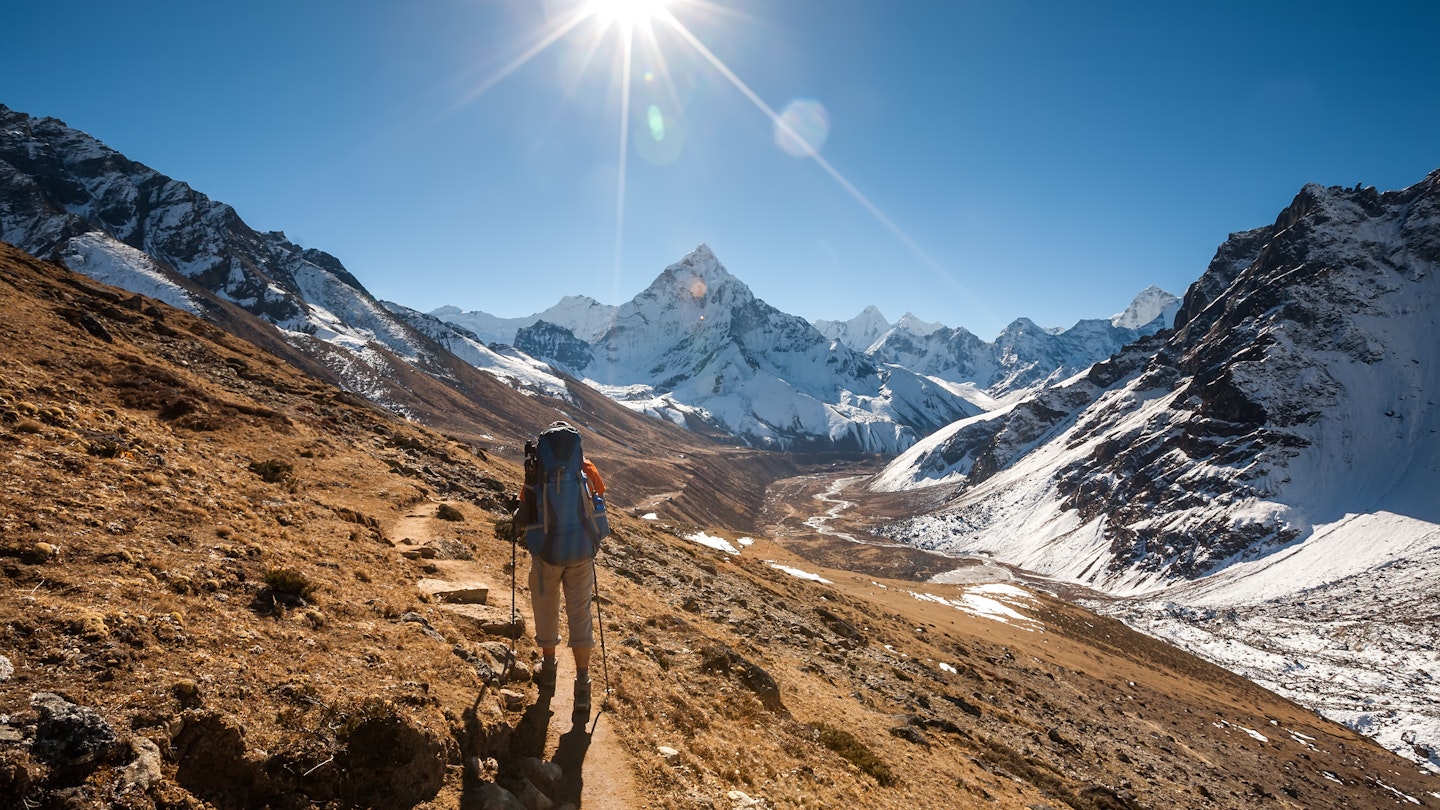
Applying for visa on arrival in Nepal may be all that stands between you and the mountains © My Good Images / Shutterstock
With world-class trekking, mountain biking and whitewater rafting, historic cities and abundant wildlife, it’s easy to understand why Nepal draws so many travelers from across the globe. Few countries in the world fit so many thrilling landscapes – from the towering Himalayas to forested foothills and steamy lowlands – into such a small space.
Deciding to visit Nepal is easy, but the logistics of getting into the country can be a bit more complicated. Here’s our handy guide to the visa requirements for Nepal, including information on tourist visas, how to extend your stay and applying to work or study in the country.
Most travelers can get a Nepali visa on arrival
Here's the good news – for most travelers, the entry requirements for Nepal are fairly simple and pain-free. Indian citizens do not need a tourist visa to visit the country, and most other tourists can get a 15-, 30- or 90-day visa on arrival. This includes visitors from the United States, Canada, Australia, New Zealand, Japan, South Korea, the UK, Ireland, France, Germany and most other Western European countries.
When you land at Kathmandu’s Tribhuvan International Airport , you need to fill in an arrival card and have your photo taken at one of the automatic registration machines – to save time, you can do this online in advance (this must be done less than 15 days before you arrive). If you leave it till you land in Kathmandu, expect the process to take over an hour, with lots of queuing.
Once the paperwork is filed, you must then pay a visa fee of US$30 for 15 days, US$50 for 30 days, or US$125 for 90 days at the payment counter. Children under the age of 10 do not need to pay for their tourist visas unless they are US citizens. Payment is accepted in a variety of major currencies but it’s advisable to bring small bills. Finally, head to the immigration desk with your arrival form, payment receipt and passport, and enjoy Nepal!

Crossing into Nepal overland
You can also cross into Nepal overland via a series of border crossings in the Terai plains, including the busy crossing at Sunauli/Bhairawa, accessible by bus from Delhi and Varanasi in India. You can still get a visa on arrival if you enter Nepal by land, but it's best to bring some passport photos with you, and you'll need to pay the visa fee in cash in US dollars.
Getting a visa in advance will save time
Even if you're eligible for a visa on arrival, the queues for a tourist visa at Tribhuvan airport can move painfully slowly, particularly during the October–November peak season. To save time, you can get a tourist visa in advance from the Nepali embassy or consulate in your home country (or the nearest embassy in a neighboring state).
If you do obtain a visa before you travel, you must enter the country within six months of the visa being issued, though the 15-, 30- or 90-day period only starts when you actually arrive in Nepal. The web portal of the Government of Nepal has a full list of Nepali overseas missions.
Some travelers can get a free visa
Reflecting Nepal's friendly relations with neighboring states, Chinese citizens are eligible for a free tourist visa, while Indian travelers can enter Nepal without a tourist visa. Travelers from many South Asian Association for Regional Cooperation (SAARC) countries can get a free 30-day visa for their first visit to Nepal in a calendar year. This rule applies to citizens of Bangladesh, Bhutan, the Maldives, Pakistan and Sri Lanka, but not to citizens of Afghanistan.

Other travelers must get a visa in advance
Citizens of Afghanistan, Cameroon, Eswatini, Ethiopia, Ghana, Iraq, Liberia, Nigeria, Palestine, Somalia, Syria and Zimbabwe must obtain a visa from their local Nepali embassy or consulate before traveling. Refugees with travel documents from their host nation must do the same.
Travelers can pay extra for a multiple entry visa
While it's more common to detour from India to Nepal than the other way round, you can turn your single-entry Nepali visa into a multiple-entry visa for US$25 at the Central Immigration Office in Kathmandu or the smaller office in Pokhara . This is helpful if you plan to take a side trip from Nepal to Bhutan or Tibet .
If you are entering Nepal from India and plan to return to India, make sure you get a multiple-entry India visa – obtaining a new visa for India in Kathmandu is a painfully slow and complicated process.

You can extend your visa for up to 150 days
If you decide you need more of Nepal's mountains and monasteries, you can extend your visa at the Department of Immigration offices in Kathmandu or Pokhara, up to a limit of 150 days in any calendar year (January to December). Extensions cost US$45 for the first 15 days, followed by US3 per day after that until you reach the 150-day limit.
Don’t overstay your visa – if you do you’ll be fined US$5 per day and you may have trouble visiting Nepal in future. Make sure you leave a gap of several days between the end of a trek and your international flight home in case there are delays getting back to Kathmandu from the trailhead.
Apply for work and study visas well in advance of travel
If you want to work or study in Nepal, you’ll need to apply for a special class of visa and fulfill a number of strict criteria. The process can be complicated, bureaucratic and time-consuming, as you have to provide recommendation letters, bank statements and other documents. Visit the Department of Immigration’s website for detailed information.
You may also like: Tragedy and resilience among the Sherpa people of the Himalaya Uncovering Kathmandu’s cosmopolitan culture: why you're going to want to linger longer 7 expert tips to sustainably trek to Everest Base Camp
Explore related stories
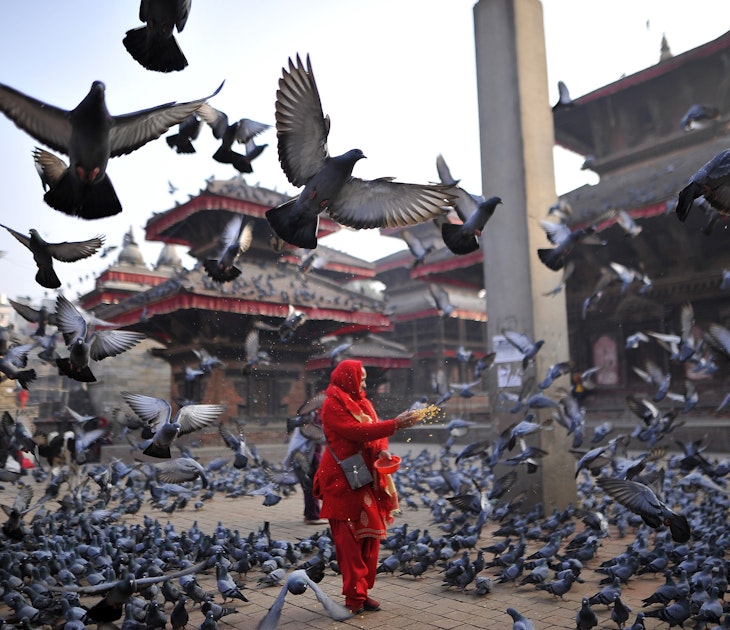
Festivals & Events
May 31, 2024 • 6 min read
Whether you're after mountain adventures or dynamic festivals, timing is a key part of a trip to Nepal. Here's how to choose the best month for your needs.

May 29, 2024 • 8 min read

May 28, 2024 • 9 min read

May 22, 2024 • 7 min read
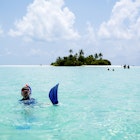
Feb 22, 2024 • 5 min read
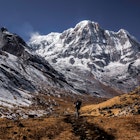
Feb 22, 2024 • 3 min read
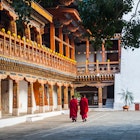
Feb 2, 2024 • 15 min read
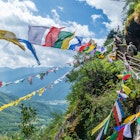
Jan 28, 2024 • 7 min read

Jan 17, 2024 • 6 min read

Jan 17, 2024 • 8 min read

Nepal Visa for Indians
On Time Guarantee
Get a 100% refund if we don’t deliver your visa on time.
Validity Period
Validity Period: This is the number of days your visa is active after the date of issuance. We ensure your visa is valid based on your travel dates.
Entry: Single You can enter the country only once during the visa’s validity period and cannot re-enter using the same visa once you’ve exited.
Your Visa Timeline
You provide us with your documents, atlys systems verify these documents & submit to the department of immigration, atlys’ government relations team in nepal works with local authorities to ensure you get your visa on time, track progress in real time.
Application has been sent to the immigration supervisor ON TIME
Application has been sent to internal intelligence ON TIME
Application sent to clearance officer
Visa on 04 Jun, 05:39 AM
Meet Fellow Indians Who Are Visa Ready with Us
Check these videos from existing Atlys members to know how we helped them get a Visa
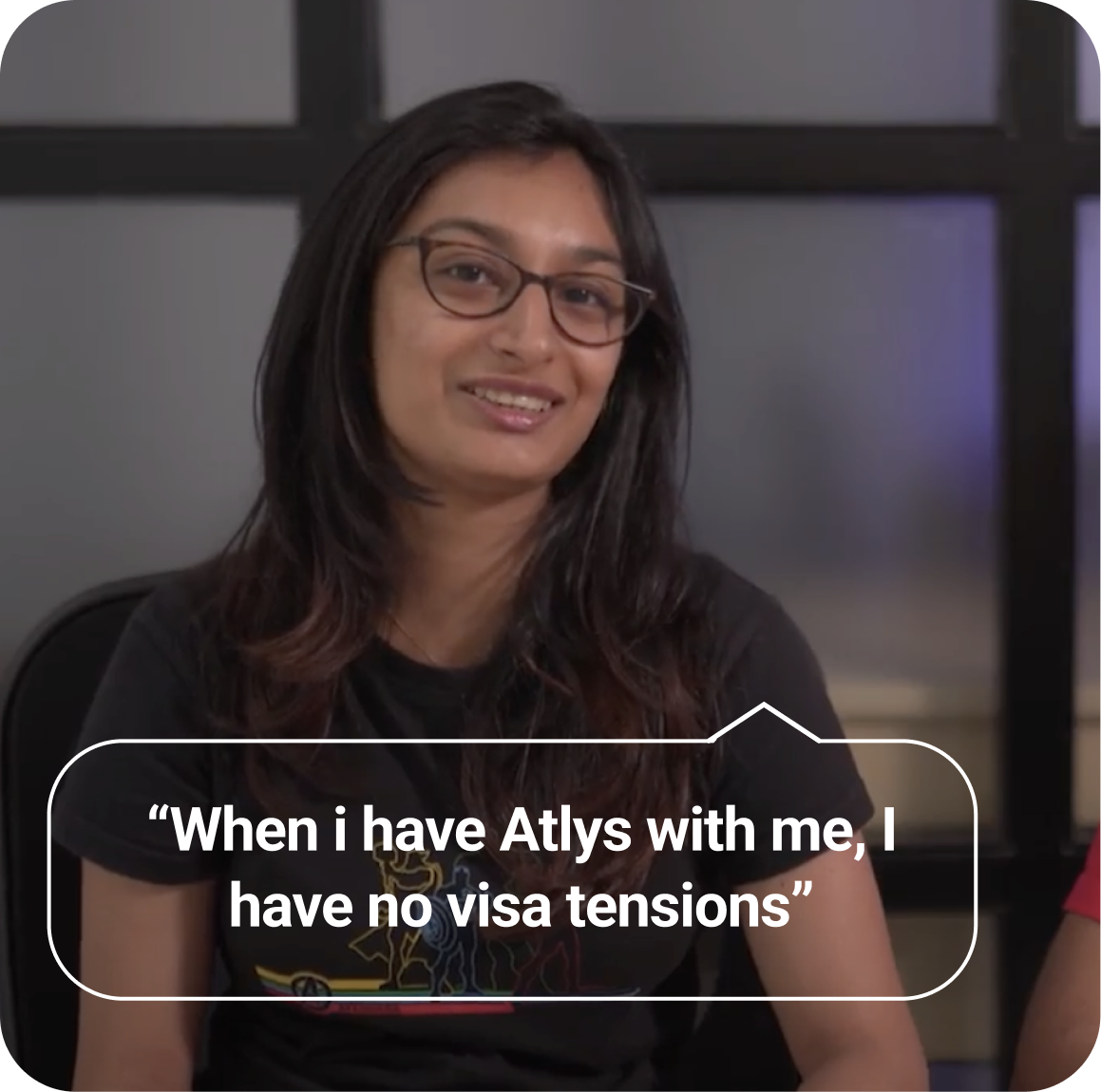
Saloni & Dev
Vietnam Visa in 2 hours
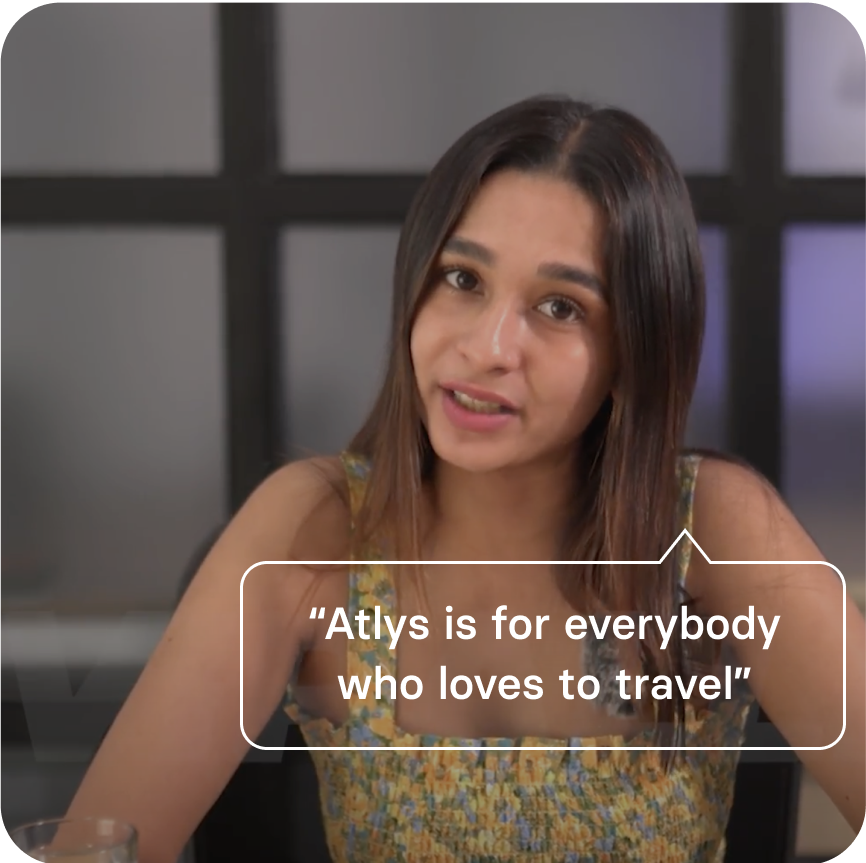
Dubai E-Visa in 24 hours
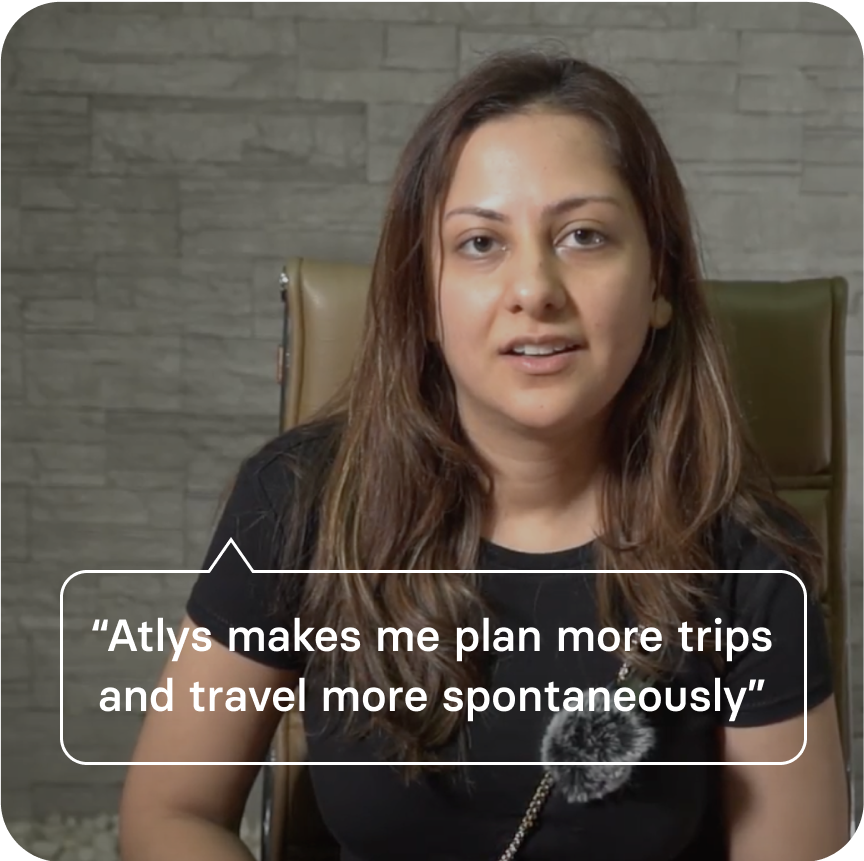
Revati Gandhi
Schengen Visa in 5 days

Saurav Srivastava
Schengen Visa in 4 days
Get a 100% refund if we don’t deliver your visa false on time
Visa Traveler
Exploring the world one country at a time
Nepal Visa for Tourists: A Comprehensive Guide
Updated: September 6, 2023
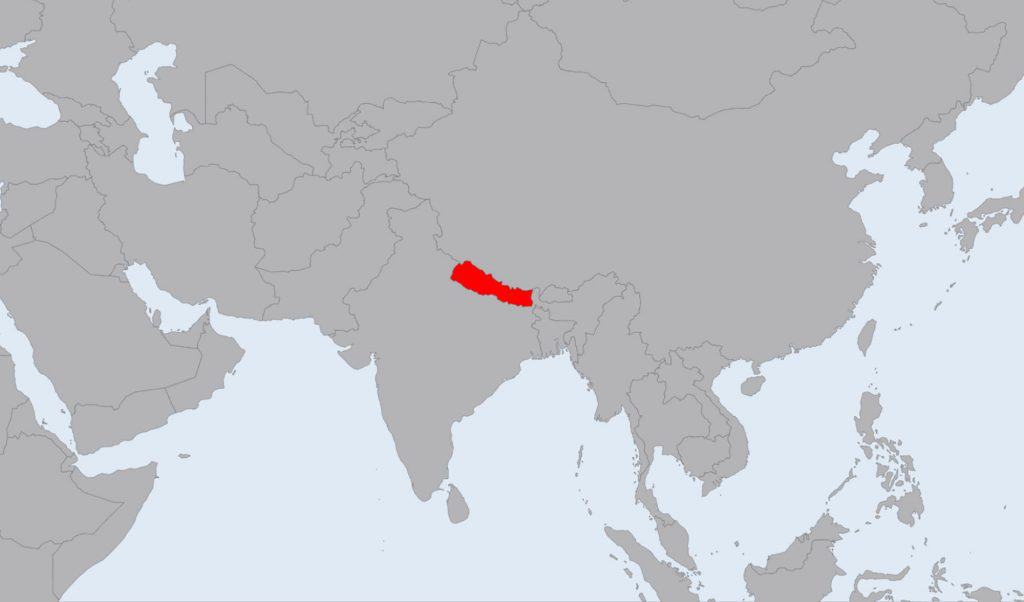
Nepal visa requirements are fairly simple and easy to understand. Nepal has an excellent visa ON ARRIVAL policy, offering visa ON ARRIVAL for passport holders of most countries in the world.
Visa ON ARRIVAL is issued free of cost for nationals of SAARC (South Asian Association for Regional Cooperation) countries including Bangladesh, Bhutan, Maldives, Pakistan and Sri Lanka.
As part of the treaty of peace and friendship between India and Nepal, Indian nationals do not need a visa to enter and stay in Nepal.
Table of Contents
Nepal visa requirements.
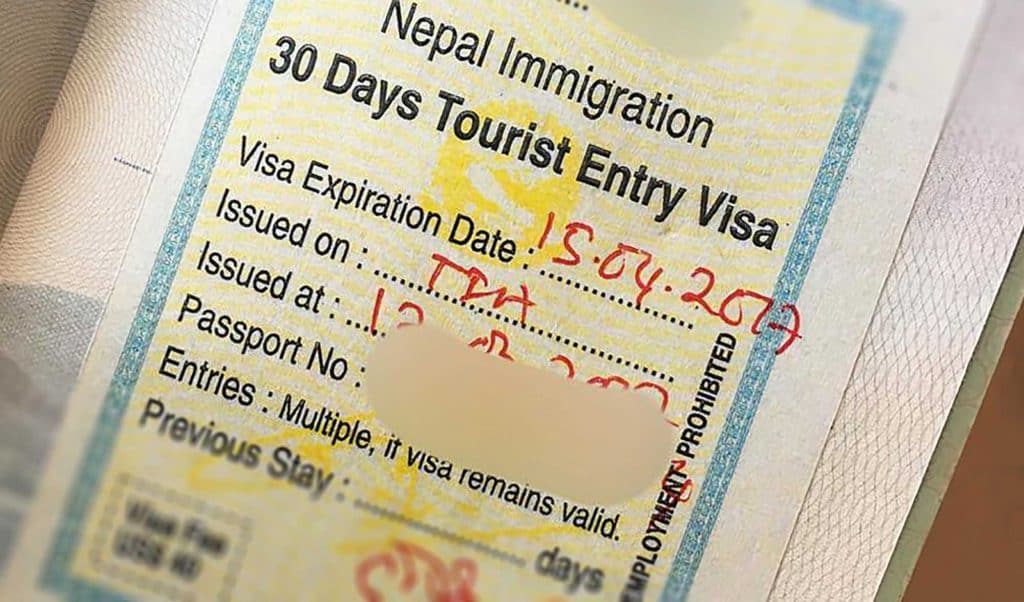
Visa EXEMPT passport holders
Visa required passport holders.
- Afghanistan
Note: Visa is also REQUIRED for passport holders with refugee status.
Visa ON ARRIVAL passport holders
Passport holders that are neither EXEMPT nor REQUIRED must apply for the visa ON ARRIVAL at Tribhuvan International Airport in Kathmandu or any of the following road border crossings.
- Bhairahawa/Sunauli
- Gaddachauki
Application Process
Visa REQUIRED passport holders must apply for Nepal tourist visa at the consulate of Nepal in their country of residence. must enter Nepal within 6 months from the date of issue. For more details, check the Nepal Immigration website or contact your nearest consulate general of Nepal.
Documentation
Visa REQUIRED passport holders must apply for Nepal tourist visa at the consulate of Nepal in their country of residence. Check the Nepal Immigration website or contact your nearest consulate general of Nepal for more details.
For the Visa ON ARRIVAL, you need to fill out and submit the online tourist visa application prior to arrival. This application is valid for a maximum of 15 days. Therefore, submit this application only within 15 days of your arrival. Take a print of the submission receipt and bring it with you on the day of arrival.
If your application has expired or forgotten to fill prior to your arrival, you can still fill it out at one of the kiosks in Tribhuvan International Airport in Kathmandu.
Documentation required for visa ON ARRIVAL at Tribhuvan International Airport.
- Filled in arrival card (your airline will give you one or you can grab one at the immigration and customs)
- Submission receipt of the online tourist visa application. If you have not submitted your application online, you can fill it at the immigration kiosks
- Passport size photo
Documentation required for visa ON ARRIVAL at road border checkpoints
- Filled in application form (you can grab one at the checkpoint)
Since passport holders of India do not need a visa to enter Nepal, they have to go through the same line as the Nepalese at Tribhuvan International Airport. They must fill out the arrival card before heading to the immigration.
The visa ON ARRIVAL fee is based on the number of days of your stay.
- 15 days visa – $25 USD
- 30 days visa – $40 USD
- 90 days visa – $100 USD (Includes multiple entry fees of $20)
Passport holders of SAARC (South Asian Association of Regional Cooperation) countries (except Afghanistan and India) visiting Nepal for the first time in a given year (Jan 01 to Dec 31), a 30-day visa ON ARRIVAL is issued free of cost. The same fee structure as everyone else applies to visas longer than 30 days.
As part of the treaty of peace and friendship between India and Nepal, passport holders of India do not need a visa. Therefore, passport holders of India must go through the same immigration line as Nepalese.
For multiple entry visas, there is an additional fee of $20 USD. 90-day visas are multiple entry and they include an additional $20 USD.
Visa fees can be paid in USD, GBP, Euro or NPR. Other currencies are also accepted but guaranteed. It is advised to have some USD handy to avoid any trouble.
Visa Extension
Tourist visas can be extended for a maximum period of 150 days in a given year (Jan 01 – Dec 31). The visa extension fee is $2 USD for each additional day.
Visa extensions can only be processed at the following immigration offices
- Immigration office in Kathmandu
- Immigration office in Pokhara
Filling an online tourist visa application is mandatory for all visa extensions. Fill out the online application and print the submission receipt before going to the immigration offices in Kathmandu or Pokhara. The following documentation is required.
- Online application submission receipt
- Copy of your Passport ID page
- Copy of your current Nepal visa
- Visa extension fee
Apply in person
Below 12 countries and any passport holders with refugee status must apply for the visa in person at the consulate of Nepal in their country of residence prior to travel to Nepal.
Immigration and Customs
Most airlines do not let you check-in online if you need a visa to travel to the destination country. If you check-in online or at the airport, either way, make sure to arrive at the gate a bit early and see the airline staff. They sometimes have to go through the visa requirements again, verify the documents and put a “Docs OK” stamp on your boarding pass.
Make sure your passport is valid for at least 6 months from the day of travel.
If you are applying for the visa ON ARRIVAL, fill out the tourist visa application online prior to arrival in Nepal. Carry a copy of the submission receipt and a passport photo with you.
When you enter the Tribhuvan International Airport in Kathmandu, follow the below steps
- Grab and fill out the arrival card
- If you haven’t submitted the tourist visa application online already, fill it out at one of the immigration kiosks
- Pay the visa fee according to the number of days you are planning on staying in Nepal
- Go through the immigration and customs
- Claim your baggage
Prepaid taxis at the Tribhuvan International Airport are a bit expensive. If you prefer to catch a cheaper taxi, exit the airport and walk towards the front of the taxi line. You will see a few taxis at the front that are not prepaid and you can negotiate the fare. You can get a taxi to Thamel for 500 NPR.
You will have to go through passport control on exit. You will also need to fill out a departure card for foreigners. This card is the same for all including Indian nationals.
You might be asked how long were you in Nepal and what was your purpose. Exit formalities take about 10-15 minutes at Tribhuvan International Airport in Kathmandu.
You may have to go through immigration and customs on your return to your home country or the country you are flying back to. If you are flying back on an Airbus A330/A340/A380 or Boeing 747/777, expect long lines at the immigration and customs.
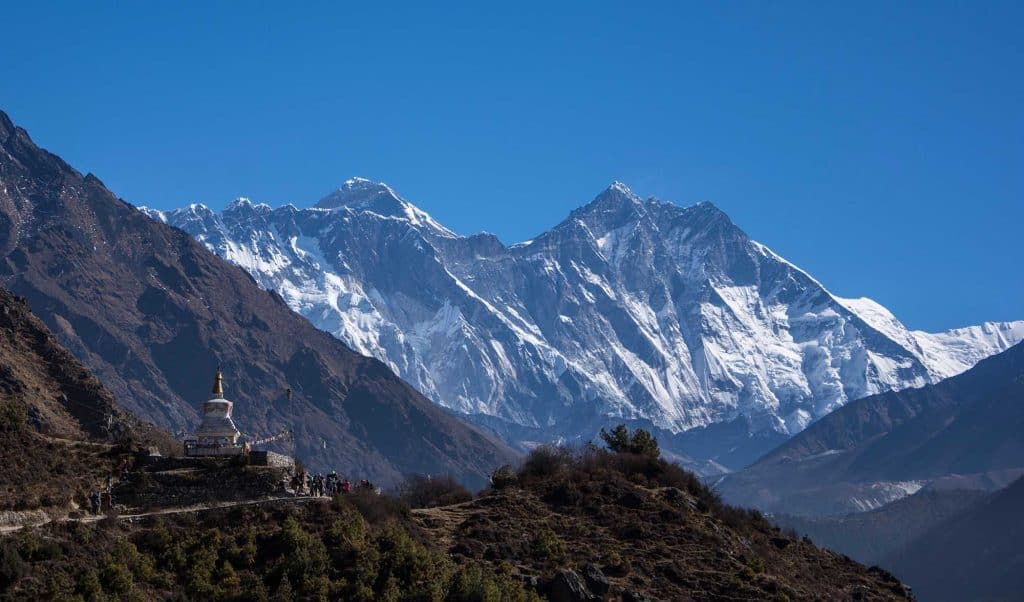
Nepal visa requirements are fairly simple. Nepal has an excellent visa on arrival policy, offering visa on arrival for most nationalities in the world. Visa on arrival is issued free of cost for citizens of SAARC countries (except Afghanistan). Indian citizens do not need a visa to enter and stay in Nepal.
WRITTEN BY THIRUMAL MOTATI

Thirumal Motati is an expert in tourist visa matters. He has been traveling the world on tourist visas for more than a decade. With his expertise, he has obtained several tourist visas, including the most strenuous ones such as the US, UK, Canada, and Schengen, some of which were granted multiple times. He has also set foot inside US consulates on numerous occasions. Mr. Motati has uncovered the secrets to successful visa applications. His guidance has enabled countless individuals to obtain their visas and fulfill their travel dreams. His statements have been mentioned in publications like Yahoo, BBC, The Hindu, and Travel Zoo.
PLAN YOUR TRAVEL WITH VISA TRAVELER
I highly recommend using these websites to plan your trip. I use these websites myself to apply for my visas, book my flights and hotels and purchase my travel insurance.
01. Apply for your visa
Get a verifiable flight itinerary for your visa application from DummyTicket247 . DummyTicket247 is a flight search engine to search and book flight itineraries for visas instantly. These flight itineraries are guaranteed to be valid for 2 weeks and work for all visa applications.
02. Book your fight
Find the cheapest flight tickets using Skyscanner . Skyscanner includes all budget airlines and you are guaranteed to find the cheapest flight to your destination.
03. Book your hotel
Book your hotel from Booking.com . Booking.com has pretty much every hotel, hostel and guesthouse from every destination.
04. Get your onward ticket
If traveling on a one-way ticket, use BestOnwardTicket to get proof of onward ticket for just $12, valid for 48 hours.
05. Purchase your insurance
Purchase travel medical insurance for your trip from SafetyWing . Insurance from SafetyWing covers COVID-19 and also comes with a visa letter which you can use for your visas.
Need more? Check out my travel resources page for the best websites to plan your trip.
LEGAL DISCLAIMER We are not affiliated with immigration, embassies or governments of any country. The content in this article is for educational and general informational purposes only, and shall not be understood or construed as, visa, immigration or legal advice. Your use of information provided in this article is solely at your own risk and you expressly agree not to rely upon any information contained in this article as a substitute for professional visa or immigration advice. Under no circumstance shall be held liable or responsible for any errors or omissions in this article or for any damage you may suffer in respect to any actions taken or not taken based on any or all of the information in this article. Please refer to our full disclaimer for further information.
AFFILIATE DISCLOSURE This post may contain affiliate links, which means we may receive a commission, at no extra cost to you, if you make a purchase through a link. Please refer to our full disclosure for further information.
MORE VISA GUIDES

UNITED KINGDOM

VIEW ALL VISA GUIDES
- Cookie Policy
- Copyright Notice
- Privacy Policy
- Terms of Use
- Flight Itinerary
- Hotel Reservation
- Travel Insurance
- Onward Ticket
- Testimonials
Search this site
Embassy of India, Kathmandu, Nepal
- Ambassador Profile
- People's Corner
- Holidays at the Embassy
- Working Hours
- Deputy-chief-of-mission
- Ambassador's Office
- Deputy-Chief
- Administration Wing
- Commerce Wing
- Consular Wing
- Defence Wing
- Brief - Pension Paying Office, Pokhara
- Pension Paying Office, Dharan
- Development Partnership Wing
- Economic Wing
- Education Wing
- Political Wing
- Press, Information & Culture Wing
- ICCR in Nepal (Swami Vivekananda Cultural Centre)
- Nepal Bharat Library
- Security Wing
- Reconstruction Wing
- Previous Ambassadors
- About India-Nepal Relations
- Emergency Telephone Number of Indian Missions/Posts for Grievances
- Right to Information
- About Amrit Mahotsava
- Emergency Contact Numbers
- Consular Services
- Valid Travel Documents
- Emergency Travel ID
- Entry of Indian Registered Vehicles in Nepal
- Kailash Mansorvar yatra (Via Nepal)
- Mountaineering Expeditions in Nepal
- Passport Services
- Passport Fees
- eTourist Visa (eTV)
- Download Forms
- Notice - Visa & Passport
- Medical Degree Verification
- Visa & Passport Contact Address
- IMPORTANT NOTICE FOR OCI/PIO CARD HOLDERS
- Renunciation of Indian Citizenship
- Registration of Indian students in Nepal
- Registration of Indian Nationals in Nepal
- FAQ on Marital Disputes
- About Development Partnership
- Tender Notice
- Development Partnership - Downloads
- Contact Address
- About Reconstruction Wing
- About Press, Information and Culture
- Mission Life
- PIC Contact Address
- About B. P. Koirala Foundation
- Board Members
- Structure of the Foundation
- About Nepal Bharat Library
- New Arrivals in Library
- Services Offered
- Membership Requirements
- Membership Application Form
- Library Hours
- About Defence
- PPO Pokhara
- PPO Kathmandu
- Bhu Puu Magazine
- Record Office Indian Embassy
- ECHS Branch
- Sampark Alumni Network
- Scholarships/Forms
- About Education and Scholarship
- Indian Technical & Economic Co-operation (ITEC) Programme
- Calendar of Scholarship Scheme
- Advisory for Indian students seeking admissions in medical colleges/Universities in Nepal
- Events/Photo Gallery
- Press Releases
- Republic Day
- Independence Day
- Commerce Wing Brief
- Business Opportunities in Nepal
- A handbook for Indian Investors in Nepal
- Complaints on Trade Disputes
- e-catalogue for Exports of Indian Millets
- About Economic Wing
- Vehicle Permit Fees
- Skip to main content
- Screen Reader Access

भारतीय राजदूतावास काठमांडू, नेपाल Embassy of India Kathmandu, Nepal

- Home › Consular › Visa
Introductory Information
- Except Bhutan & Nepal Nationals all foreign nationals including children MUST obtain a visa to travel to India
- Please do not finalize your travel arrangements to India before ascertaining the visa requirements.
- Validity of Visas is effective from the date of issue and not from the date of entry into India
- The Embassy of India, Kathmandu reserves the right to delay/refuse visa without assigning any reasons. Visas are issued subject to various checks and clearances. Visa fee once deposited will not be refunded.
- The Embassy of India, Kathmandu reserves the right of granting and deciding type of visa / duration of visa / number of entries, irrespective of the fees rendered.
- Passport must be valid for a minimum period of six months and in cases of long term visas, at least till the duration of the visa requested for.
- Acceptance of visa application does not necessarily mean grant of visa.
- Suppression of facts or furnishing misleading/false information will result in denial of visa without assigning any reasons.
- Granting of visa does not confer the right of entry which is subject to the discretion of the Immigration Authorities.
- Canvassing for visa, suppression of material facts or submission of forged / false documents is a disqualification. Overstay of visa or violation of visa rules is a disqualification for grant of future visa.
- No objection letter from either of the parents is required if a minor is traveling with one parent.
- If the minor is traveling alone or with relatives, consent letter signed by both the parents is required
- Visa applications of non-resident foreign nationals will be entertained for short term Tourist visa (3 month or 6 month/single entry). They are advised to obtain long term Tourist visas and other categories of visas from the country of their origin.
VISA SERVICE: General Information
- With effect from 19.11.2012 all visa applications submitted at the Indian Visa Service Centre (IVSC) (i.e. by the ordinary passport holders) and at the Embassy of India, Kathmandu (i.e. by Diplomatic, Official and UNLP passport holders) will only be accepted in the online form.
- From 17.09.2009, Embassy of India, Katmandu has authorized Nepal SBI Bank to operate Indian Visa Service Centre' (IVSC) at the following address:
Indian Visa Service Centre (IVSC) House No.296, Kapurdhara Marg, Kathmandu (Adjacent to Indian Embassy, Kathmandu) Tel: 009771-4001516, Fax: 009771-4001517 E-Mail: visa[dot]india[at]nsbl[dot]com[dot]np , Website: http://nepalsbi.com.np/content/indian-visa-service-center-ivsc.cfm
WORKING HOURS
- Online visa applications can be submitted at the visa counter of the IVSC between 0930 hrs to 1200 hrs on all working days. Processing time is 7-10 days or more depending on the visa regulations.
- Delivery of passports affixed with visas can be collected next working day of submission of original passport from the counter of the IVSC between 1500 hrs to 1700 hrs on all working days.
GUIDELINES FOR APPLYING & OBTAINING MANDATORY ONLINE VISA
- Visit Embassy of India, Kathmandu website www.indembkathmandu.gov.in . Click on “Visa & Passport” on the Home page of the website and then click on “ Visa” for general information/instructions on visa and type of visa, you wish to apply. You will find all relevant information pertaining to the visa category selected therein. You may then click on the hyperlink “Online Visa Application” to be redirected to the Government of India Visa Online Application Website: www.indianvisaonline.gov.in for the online visa application form.
- Carefully note down the Temporary Application ID number (15 alpha numeric characters), which will be displayed immediately on the Government of India Visa Online application form. This can be saved to retrieve your application and continue in case you wish to complete part of the application later.
- Upon successfully completing the online application, you will receive a Web Reference Confirmation Number . The completed Government of India Visa Application form will open up in PDF format at this stage. Save the form and print out the same for submission to the Indian Visa Service Centre, House No.296, Kapurdhara Marg, Kathmandu (Adjacent Embassy of India, Kathmandu) on the next day.
- When filing the Online Form, please ensure all details entered are accurate. The option to edit form is not available once the form has been saved. In such case, a new form needs to be filled with correct information.
- You can use either an Ink-Jet or Laser printer to print the completed Visa Application Form once you have submitted online.
- This site is best viewed in Internet Explorer (Windows) version 8.0 and above.
- You must also have Adobe Acrobat Reader version 7.0 or a higher version installed on your computer in order to download and print the completed application form.
- Printout of the completed form, signed by applicant in presence of officials of the Indian Visa Service Centre, should be submitted along with supporting documents and passport for scrutiny and processing of visa to Indian Visa Service Centre, Kathmandu on the next day.
- Submission of all relevant documents mentioned in the checklist on the website is important for acceptance of the visa application at the Indian Visa Service/Embassy of India, Kathmandu.
- It is a mandatory requirement to ensure that your photo is 2 inch x 2 inch (51mm x 51mm) in size with white background. Photos which do not meet this specification will not be accepted . Detailed requirements regarding the photo can be found in the Indian Online VISA Site.
- The online visa application form should be filled at least one day in advance of submission of application form print-out at the Indian Visa Service Centre/Embassy of India, Kathmandu.
- In case of any difficulty in filling up of visa application forms, applicants may please call our Indian Visa Service Centre Tel: 00971-4001516.
Information regarding Online Visa Application is also available at the website of Indian Visa Service Center, Kathmandu - http://nepalsbi.com.np/content/indian-visa-service-center-ivsc.cfm Note:
- Depending on the speed of your Internet connection, it may take several minutes to download the initial and completed copies of the form/s.
- Once you have completed your online application form please ensure that you bring a hard copy of the completed and signed form with you when visiting the Indian Visa Service Centre. Incomplete applications or those not signed by applicants themselves or containing incorrect information are liable for rejection without any claim for fee refund.
On first day of visit to the IVSC
- Produce your online visa application and your passport for scrutiny and processing of your visa request.
- Collect your receipt and note the date for your next visit.
- Keep the fee receipt carefully. Present the same during your subsequent visit.
- Transit visa will be granted on the next day of submitting the print out of duly completed online visa application form.
Important Notice for Agents
- In the part of “applicant contact details ” on the online visa application form, the applicant is required to fill the personal contact number on the online application form. The visa application form containing agent contact number instead of applicant contact number will not be accepted at India Visa Application Centre.
THE ONLINE VISA APPLICATION - FREQUENTLY ASKED QUESTIONS (FAQs) Question: What information will I need to complete the application? Answer: Information needed on the India Visa Application is as under:
- Personal information: Name, Last name at birth (If different), Marital Status, Gender, Date of birth, Place of birth
- Spouse information (if married): Maiden name, Name, Nationality
- Nationality: Current nationality, Acquired by birth or by naturalization
- Nationality at birth, Any other nationality held at present/past
- Educational Qualification, Religion (you may choose not to disclose)
- Present address: Street number, City, State, Zip
- Permanent address: Street number, City, State, Zip, Country
- Contact numbers: Home/Hotel phone, Cell phone
- Profession / Employer information: Name, Address, City, State, Zip, Country
- Passport information: Passport number, Date of issue, Date of expiration
- Details of any other Passports/Identity Certificate held
- Parent’s information: Father/Mother's name, nationality of Parents or Grandparents (paternal and maternal) who at any point held Pakistan Nationality? (If yes): provide detail
- Previous Indian Visa information: Visa Type, Number of entries, Places to visit, Object of Journey
- Visited India before (if yes): Addresses visited, Cities visited, Consulate that issued visa Starting/Ending Dates
- Have you ever been refused an Indian visa before? (if yes): Provide details
- Are you holding a valid "No objection" to return to India endorsement? (If yes): Provide details
- Have you worked with Armed Forces: provide organization, place of posting, designation/rank.
- Expected Date of departure from Nepal to India, Port of arrival in India
- Reference information in India: Name, address and phone number of reference in India
- Reference information in Nepal: Name, address and phone number of reference in Nepal
- Countries visited in the last 10 years
Question: What do I choose for Indian Mission? Answer: Your Indian Mission is the location of the processing site where you will submit your application. Question: What do I enter if I don’t have a 'Citizenship or National ID number'? Answer: Please enter 'NA'. Do not enter your social security number, insurance number or driver's license number. Question: There is no place for me to enter my middle name. Where do I type it in? Answer: Enter your middle after your first name in the Given Name field. Question: I am an unemployed adult. What can I enter under 'Profession'? Answer: Choose 'Other' and in the 'Employer Name and Address' field, please enter 'None'. Question: I am completing a form for my baby who does not have a profession. What can I enter? Answer: Choose 'Other' and in the 'Employer Name' field, please enter 'NA minor child'. If you child is going to school, please choose 'Student' under profession. Question: The options under 'Profession' does not include my job. What can I do? Answer: You have the option to choose 'Other' and in the 'Designation/Rank' field, specify your job title. Question: How do I answer 'Any other valid Passport/Identity Certificate(IC) held?'. Answer: If you possess any other passport, travel document or Identity Certificate that is valid and issued to you by the country of your current nationality or any other country, answer yes and provide the required details in the specific columns provided for this. If not, answer no. Question: I am not comfortable disclosing my religion. What can I do? Answer: You have the option to choose 'Others' and in the field below that, enter NA. Question: If I completed the online application, but I did not print copy of my application, what should I do? Answer: We suggest you check your email with our Online Visa Registration Details from the Indian government website webmaster. This email will contain your Web File Number. Choose continue with registration and on the next page, choose the grey 'RePrint' button on upper right hand corner of the screen. If you continue to encounter issues, you are allowed to complete a new online application. Question: What can I do if I am having trouble completing the online visa application? Answer: Please verify that Javascript and cookies are enabled on your computer. Also check that the date/time on your computer is set correctly. If the date/time is set in the future, this can result in not being able to advance past the first page in some browsers. Question: Can I save my application, and come back to it later? Answer: When you begin an application online, you will be provided with a Temporary Application ID which is usually 15 alphanumeric digits. Using this Application ID and temporary password, you will have up to seven days to complete your application. You can resume a partially completed application by going to the online India visa application , choose "Continue Registration". On the following page in the upper right hand corner, enter your Temporary Application ID number and choose "Go". Please remember that if you do not complete your application within seven days, your application will be deactivated and you will have to start a new application. Question: Is there a different version of the application that can be faxed or emailed to me? Answer: You must use the online application form. The form is bar coded and will store your information securely for faster processing. No handwritten application forms will be accepted. Question: I made a mistake on my visa application, how should I correct it? Answer: Mistakes made on your online visa application cannot be corrected after you press ‘SAVE’ option. Please ensure that all information is complete and that passport information is entered exactly as shown on your passport. If you continue to encounter issues, you are allowed to complete a new online application. . BRIEF INFORMATION AND REQUIREMENTS ON VARIOUS CATEGORIES OF VISA: Documents required for all type of Visa:
- Copy of Passport
- Copy of Nepalese visa
- Copy of previous Indian visa
I TOURIST VISA (TV):
- As per the extant instructions of the Government of India, a Tourist Visa can only be granted to a foreigner who does not have a residence or occupation in India and whose sole objective of visiting India is recreation, sight-seeing, casual visit to meet friends and relatives etc.
- No other activity is permissible on a Tourist Visa.
- It is non-extendable and non-convertible to other types of visas and its misuse would entail deportation by Indian authorities. It may also entail denial of visa by the Mission.
- Tourist visa, maximum period of 12 months validity could be granted to foreigners.
- Repeated applications for Tourist visa will not be entertained.
I eTourist Visa (eTV) Please click on the link for the official website regarding e Tourist Visa (eTV) – https://indianvisaonline.gov.in/evisa/tvoa.html
II BUSINESS VISA (BV): It is mandatory for Business Visa applicant to be a resident in Nepal for at least 2 years
- Business Visa needs to be obtained from Indian Mission of the country of origin of the applicant or from the country of domicile of the foreigner provided the period of permanent residence of that applicant in that particular country is over two years.
- Business visa will be granted to a foreign businessman who wants to visit India to establish an industrial/business venture or to explore possibilities to set up industrial/business venture.
- Business visa will also be granted to a person who intends to visit India for purchase and sale of industrial products.
- It is generally granted for short visits to India for engaging in business or attending business meeting/negotiations.
- Undertaking employment with BV is illegal.
- This visa is to be used for short visits and not for continuous stay in India for engaging in business.
- Business visa will not be granted to foreign nationals coming for executing projects/contracts in India.
- A foreign national coming for executing projects/contracts will not be granted Business Visa. They may apply for grant of Employment Visa in Indian Mission in country of origin of the applicant.
- Family members of a foreign national granted Business Visa may apply for grant of an ‘X’ visa (i.e. Dependent Visa). The validity of ‘X’ Visa could be co-terminus with the validity of the principal Visa holder.
- Appropriate document endorsing business involved in is necessary which include the following:
- Company Registration Certificate
- Position held by the applicant in the company
- Invitation letters from company in India and letter from applicant’s company sponsoring the business visit to India indicating nature of applicant’s business, probable duration of stay, places and companies in India to be visited, are to be enclosed.
- Copy of Business Registration Certification issued by the Nepal authorities should be enclosed along with application.
III STUDENT VISA (SV):
- Granted for study only in Government of India recognized educational institutions/Colleges for foreigners to pursue a recognized course.
- Before seeking admission, Students are advised to confirm production of documents relating to recognitions of the institute/college for study by foreigners and recognition of the course. .
- Student visa is granted only for the term of the course.
- Certificate issued by the educational authorities in India, should indicate the full term of the course as well as the relevant year in which the applicant would be pursing the course.
- Submission of proof of Academic records in respect of education completed will be necessary. Evidence of admission to the Institute/Course from recognized University / Board (Indicate name of Institution/address/Tel & Fax no. & e-mail/website address)
- Certificate as a student if already pursuing studies in India
- Photocopies of relevant academic certificates on the basis of which admission is sought or has been obtained and satisfactory evidence of financial support - bank guarantee / letter of support from parent / guardian
- Student should also produce evidence of transfer of funds for at least 4 months sustenance in India
- Tourist Visa is not convertible to Student Visa. Seeking admission /studying in India under Tourist visa is illegal
- A provisional student visa for 3 months will be issued on the basis of provisional admission certificate/letter of offer issued by the university/recognized college or educational institution in India. If the admission is not given/ confirmed within the stipulated period, the student will have to leave India. This visa can be extended through local FRRO while studying in India, if required.
IV EMPLOYMENT VISA (EV) It is mandatory for an Employment Visa applicant to be a resident in Nepal for at least 2 years
- Copy of the Contract/Agreement of Employment with the Indian employer in Senior Managerial/Executive positions or jobs needing very special skills, will be necessary.
- Proof of registration of the company under relevant provisions of the Government of India rules,
- A letter from the employer indicating nature of the job, salary structure and duration of hire
- Justification letter from the employer for proposing to hire a foreigner should be submitted. Proof of qualifications and work experience of the applicant also need to be enclosed.
- The spouse and children accompanying the applicant would be issued the visa only after the applicant obtains employment visa. The copy of the applicant‘s employment visa should be attached with the spouse/children application along with a copy of marriage/birth certificate/s.
- Employment visa is extendable in India by Immigration Department. Registration is mandatory.
V TRANSIT VISA (TRV)
- It is granted for the sole purpose of enabling a foreigner to travel through India to reach his ultimate destination.
- Validity of Transit Visa is 15 days and stay should not exceed 03 days
- For stay in India beyond 03 days, appropriate visa must be obtained.
- Applicant must submit detailed travel plans along with his/her form and produce confirmed tickets.
VI RESEARCH VISA (RV)
- The foreigner who desires to undertake research in India should apply to the concerned Indian Mission with a copy of the subject of research projects, details of places to be visited, previous visits, evidence of confirmed admission to recognized or reputed institutions and evidence of financial resources.
VII CONFERENCE VISA (CV) Following Documents are required to be attached along with the application for a Conference Visa:
- Invitation letter from the organizer.
- Security clearance from the Ministry of Home Affairs, Govt. of India.
- Administrative approval of the nodal Ministry.
- Political clearance from the Ministry of External Affairs, Govt. of India.
- Clearance from the State Government/UT concerned.
VIII JOURNALIST VISA (JV)
- Applicants representing recognized print/electronic media and visiting India on professional work must apply well in advance.
- Interview is mandatory for Journalists while applying for visa including for Tourist Visa.
IX ENTRY VISA (XV)
- Granted to spouse of Indian nationals, particularly those who want to live in India with their Indian wife/husband. Permanent place of residence of the Indian national in India is necessary.
- Spouse of the Indian national must enclose along with the application form, a copy of the Indian passport of his/her spouse with the applicant’s name duly endorsed in the Indian passport, along with a copy of the marriage certificate. Original registered marriage certificate should be produced at the time of visa application.
- XV is also issued to spouse and children of foreign nationals who have been issued with Business/Employment Visa
- XV is extendable in India.
X MEDICAL VISA (MV) & MEDICAL ATTENDANT VISA (MXV ) Applicants going to India for medical treatment need to submit the following:
- Confirmed appointment with doctor/reputed hospital in India and a request letter to the Embassy of India, Kathmandu by concerned doctor/hospital.
- Original medical papers indicating appointment and requirement for treatment in India
- Medical papers showing current medical treatment in Nepal with details
- Details of hospital/clinic where the applicant intends to seek treatment or has been referred to by doctors in Nepal
- Medical visa is issued for treatment only for reputed hospitals in India.
REGISTRATION OF FOREIGNERS IN INDIA It is necessary when a foreigner intends to stay in India continuously for a period beyond 180 days. It is mandatory in respect of foreigners visiting India on Student/Employment/Research/Entry/Medical/Medical Attendant Visas.
- The registration has to be done within 14 days of his/her first arrival with the concerned Foreigners Regional Registration Office (FRRO) in India.
- Registration is not endorsed on passport and acceptance of disembarkation card on arrival by Immigration officials does not amount to registration. A separate Certificate of Registration / Residential Permit (RP) is issued by Immigration officials in India on fulfillment of conditions.
- The registration document is required to be shown to the Immigration officials at the port of departure, every time, while departing India. It is required to be surrendered to the immigration officials at the port of departure at the time of last departure, when another immediate visit on the same visa is not anticipated.
- Travel to Nepal
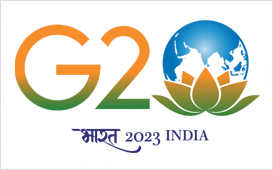
- Terms & Conditions
- Privacy Policy
- Copyright Policy
- Hyperlinking Policy
- Accessibility Statement
© 2018 Embassy of India, Kathmandu, Nepal. All Rights Reserved.
Visitors: 12606585 | Page last updated on: 06-06-2024
Designed by Jadon Webtech Pvt Ltd

गृह मन्त्रालय
अध्यागमन विभाग.
कालिकास्थान, काठमाडौँ
- इन्डियन नागरिकको लाग...
इन्डियन नागरिकको लागि सूचना
Identity documents required for Indian citizen going to/coming from Nepal by Air:-
- Valid National passport.
- Photo Identity card issued by the Government of India/State Govt./UT Administration in India to their employees or Election ID card issued by Election Commission of India.
- Emergency Certificate issued by Embassy of India, Kathmandu.
- Identity Certificate issued by Embassy of India, Kathmandu.
- Persons in the age of group of above 65 years and below 15 years would be exempted from the requirement of approved identity documents mentioned at SL. No. (i),(ii),(iii) and (iv). However, they must have some documents with photograph to confirm their age and identity such as PAN card, Driving license, CGHS card, Ration card etc.
- Children between the age group of 15 to 18 years may be allowed to travel between India and Nepal on the strength of Identity certificate issued by the principal of the school in the prescribed performa.
- In case of a family (family means husband wife, minor children and parents) traveling together, the approved identification document at SL. NO.(i) ),(ii),(iii) and (iv) would not be insisted from all the family members if one of the adult members of the family has in possession of one of the prescribed identification document at SL. NO.(i) ,(ii),(iii) and (iv). However, the other family members must have some proof of their identity with photograph and their relationship as a family viz. CGHS card, Ration card, Driving license, ID card issued by school/college etc.
- Aadhaar (UID) card is not an acceptable travel document for travel to Nepal/Bhutan.
- Certificate of Registration issued by the Embassy of India, Kathmandu, Nepal to Indian nationals is not an acceptable travel document for travelling between India and Nepal.
- The Emergency Certificate & Identity Certificate issued by the Embassy of India, Kathmandu will be valid for single journey for travelling back to India
- 07 जेष्ठ बोलपत्र स्वीकृत गर्ने आशयको सूचना । 17 दिन अगाडी
- 07 जेष्ठ Invitation for Bids No: DOI/G/NCB-08/2080-81 17 दिन अगाडी
- 19 बैशाख बोलपत्र स्वीकृत गर्ने आशयको सूचना । (प्रकाशित मिति: २०८१।०१।१९) 1 महिना अगाडी
- 06 बैशाख बोलपत्र स्वीकृत गर्ने आशयको सूचना । 1 महिना अगाडी
- 02 बैशाख ट्रेकिंग एजेन्सीहरुलाई अनुरोध 1 महिना अगाडी
- 02 चैत्र सूचना । 2 महिना अगाडी
- 15 फाल्गुन लेख रचना उपलब्ध गराउने सम्बन्धमा । 3 महिना अगाडी
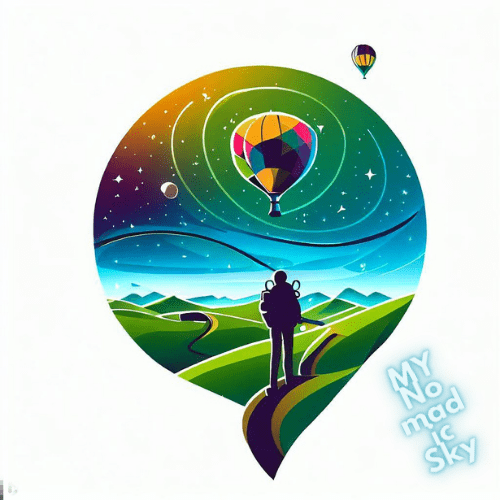
My Nomadic Sky
How to Go to Nepal from India: Your Comprehensive Travel Guide
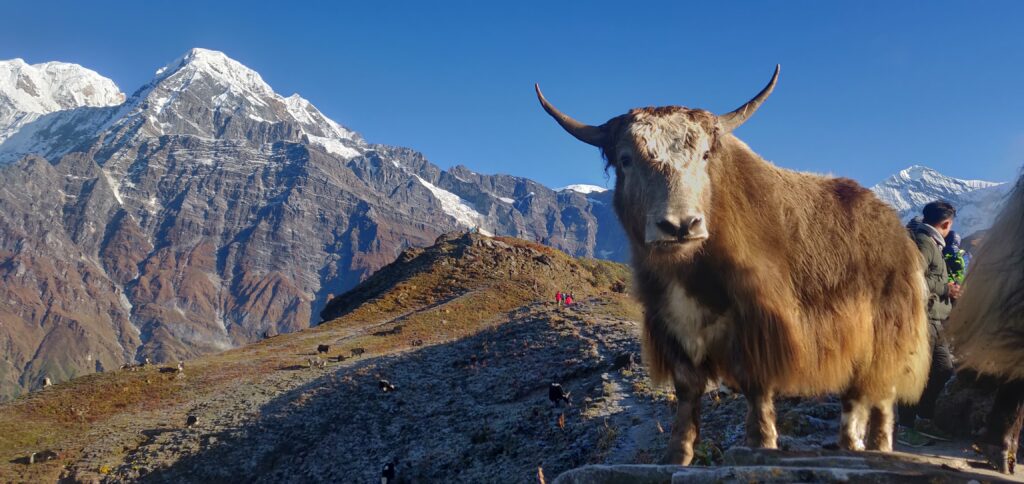
Table of Contents
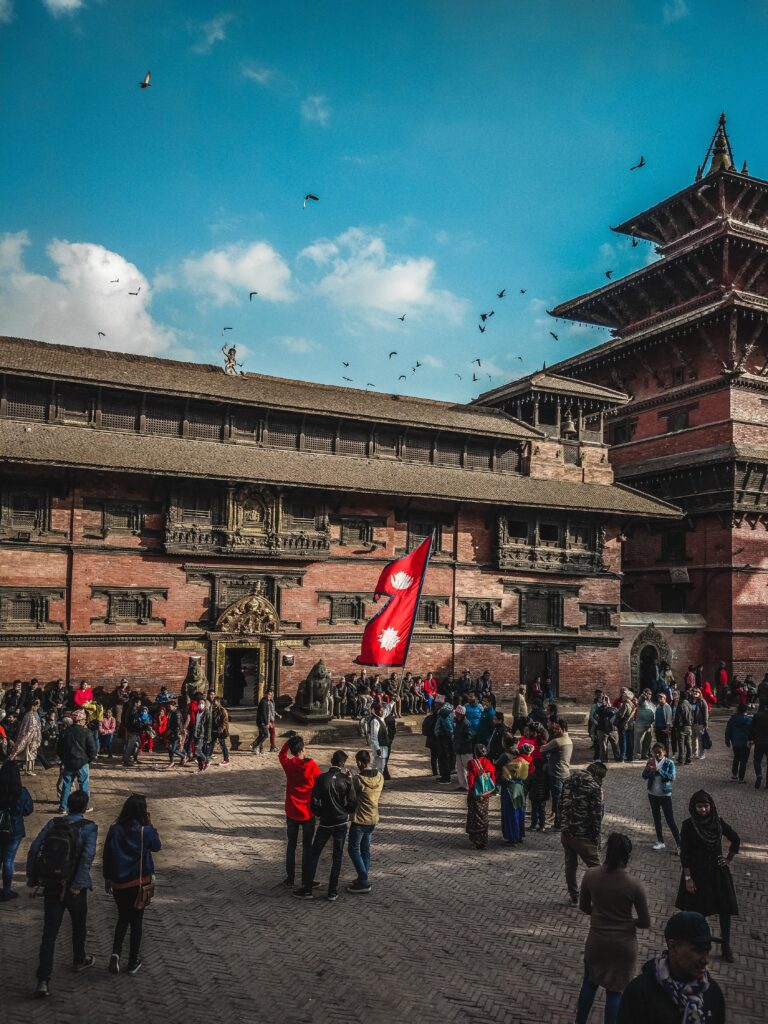
Introduction: How to Go to Nepal from India
Are you planning an exciting adventure to the mystical land of Nepal from the neighboring country of India? Embarking on this journey requires thorough preparation and knowledge. In this comprehensive guide, we will take you through the various modes of transportation, visa requirements, and essential tips to ensure your trip to Nepal is smooth and memorable.
Getting Started: Research and Planning
Before you set off on your journey to Nepal, it’s crucial to conduct proper research and plan meticulously. Here are some key points to consider:
1. Determine Your Destination in Nepal
Nepal offers diverse attractions, from the bustling capital city of Kathmandu to the serene Himalayan mountains. Decide on your destination to tailor your travel plans accordingly.
2. Check Visa and Entry Requirements
Ensure you have the necessary visas and permits to enter Nepal. Indian citizens can obtain a visa on arrival at the border or apply in advance at the Embassy of Nepal in India.
3. Choose Your Mode of Transportation
Nepal is accessible from India through various means of transportation. Let’s explore your options:
Traveling by Air
4. booking flights.
Look for affordable and convenient flights from major Indian cities like Delhi, Mumbai, Kolkata, and Varanasi to Tribhuvan International Airport in Kathmandu.
5. Airlines and Routes
Several airlines operate flights between India and Nepal. Compare airlines, routes, and ticket prices to find the best option for your budget and schedule.
6. Documents and Requirements
Ensure you have your passport, visa, and any required COVID-19 documents in order before boarding your flight.
Traveling by Road
7. crossing the border.
If you prefer a more adventurous journey, you can drive or hire a vehicle to cross the India-Nepal border. Major border crossings include Sunauli, Raxaul, and Panitanki.
8. Permits and Documentation
Be aware of the permits and documentation needed for your vehicle when crossing the border. It’s advisable to check with the relevant authorities beforehand.
Traveling by Train
9. traveling by train.
While there are no direct trains to Nepal, you can take a train to the Indian border town of Gorakhpur and then continue your journey by road.
Accommodation and Travel Tips
10. accommodation options.
Nepal offers a wide range of accommodation options, from budget hostels to luxurious resorts. Book your stay in advance, especially during the peak tourist season.
11. Currency Exchange
Exchange Indian Rupees for Nepali Rupees upon arrival in Nepal. Currency exchange facilities are available at the airport and in major cities.
12. Local Cuisine
Don’t miss the opportunity to savor delicious Nepali cuisine, including momo (dumplings) and dal bhat (rice and lentils). Explore local eateries for an authentic culinary experience.
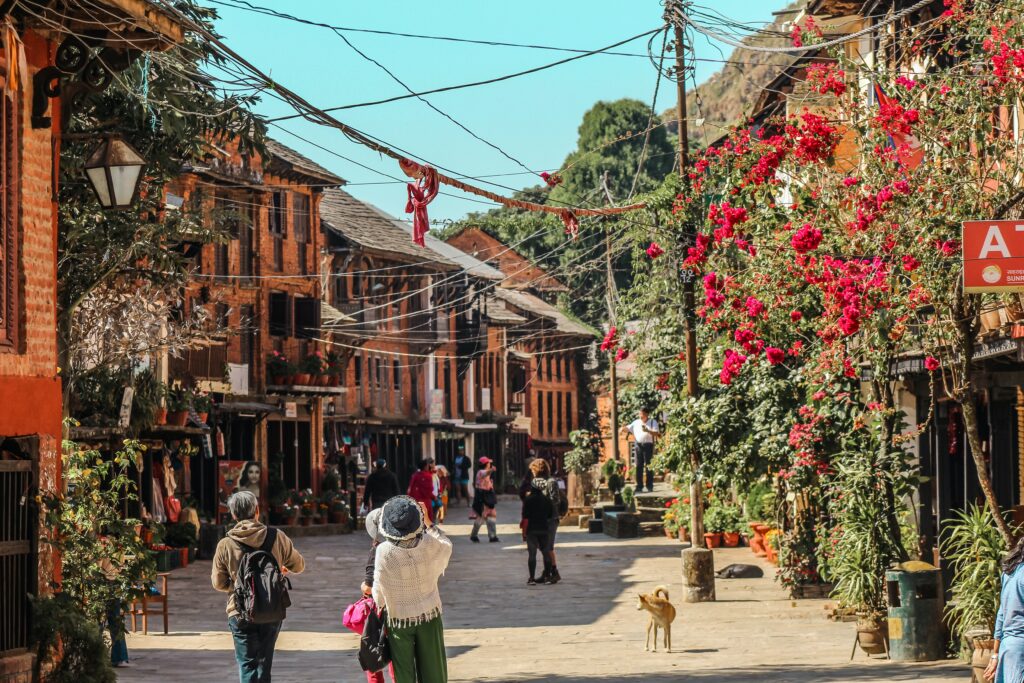
Exploring Nepal
13. local transport.
Getting around Nepal is relatively easy. You can use taxis, buses, or rent a motorcycle to explore the country’s rich culture and breathtaking landscapes.
14. Adventure Activities
Nepal is a paradise for adventure enthusiasts. Try trekking, mountain biking, paragliding, or white-water rafting for an adrenaline rush.
15. Cultural Etiquette
Respect local customs and traditions. Dress modestly, remove your shoes before entering temples, and ask for permission before taking photos of people.
Your journey from India to Nepal promises to be an unforgettable experience filled with adventure, culture, and natural beauty. With proper planning and preparation, you can ensure a smooth transition from one incredible country to another.
FAQs (Frequently Asked Questions)
1. is it safe to travel from india to nepal.
Traveling between India and Nepal is generally safe, but it’s essential to stay informed about any travel advisories or local conditions before your trip.
2. What is the best time to visit Nepal?
The best time to visit Nepal is during the spring (March to May) and autumn (September to November) when the weather is pleasant and ideal for outdoor activities.
3. Do I need travel insurance for my trip to Nepal?
Yes, it’s highly recommended to have travel insurance that covers medical emergencies and trip cancellations when traveling to Nepal.
4. Can I use Indian currency in Nepal?
While Indian Rupees are widely accepted in some parts of Nepal, it’s advisable to exchange them for Nepali Rupees for better convenience.
5. What should I pack for my trip to Nepal?
Pack appropriate clothing for the season, comfortable walking shoes, a good quality backpack, and essential travel documents, including your passport and visa.
1 thought on “How to Go to Nepal from India: Your Comprehensive Travel Guide”
- Pingback: Top 10 budget Friendly Vacations
Leave a comment Cancel reply
Save my name, email, and website in this browser for the next time I comment.
For quick Inquiry: +977 98510 42334
- Everest Base Camp Trek
- Annapurna Base Camp Trek
- Upper Dolpo Trek
- Manaslu Circuit Trek
- Kanchenjunga Circuit Trek
- Langtang Valley Trek
- Ruby Valley Trek
- Makalu Sherpani Col Pass trek
- Everest Khumbu Treks
- Annapurna Treks
- Ganesh Himal & Manaslu Treks
- Dolpo Treks
- Dhaulagiri Treks
- Humla Simikot Treks
- Kanchenjunga Treks
- Langtang & Helambu Treks
- Rara Mugu & Jumla Treks
- Less Touristic Trekking Destination
- Nepal Package Tours
- Day Hike Around In Kathmandu
- Nepal Bhutan Tours
- Nepal Tibet Tours
- Nepal India Tours
- Nepal Bhutan India Tours
- Nepal Bhutan Tibet Tours
- Adventure Sports
- Trekking and Walking
- Peak Climbing in Nepal
- Homestay Trips
- Rafting & Kayaking
- Cultural & Religious Tours
- Mountain Expedition
- Online Payment
How to Travel to Nepal from India?

Nepal is a shockingly beautiful country that draws in travelers for innumerable reasons. Some are baited by the call of the mountains to ascend the Himalayas; others are captivated by the way of life and the renowned city of Kathmandu. Nepal can be an adrenaline experience, a social shocker, a groundbreaking encounter, or something beyond imagination.
Nepal is also one of India's closest neighbors, therefore there are various approaches to the land of Nepal based on interest, time, and budget. The following is a comprehensive travel guide for Indians or foreigners visiting Nepal from different parts of India, including transportation options and essential papers.
- Getting To Nepal from India by Air
Air travel to Nepal is the quickest and simplest choice, with many airlines operating flights from all major Indian cities to the sole international airport of Nepal, i.e. Tribhuvan International Airport. Airlines such as Nepal Airlines, Indigo, Air India, and Buddha Air are some of the airlines that fly every day from major cities such as Delhi, Kolkata, Mumbai, and Bangalore.
- Delhi to Kathmandu by Flight
There are around 7 flights each day from Delhi's Indira Gandhi International Airport to Kathmandu's Tribhuvan International Airport, with only two of these being direct flights. The distance between the two cities is 507 miles (817 kilometers). The flying time is anticipated to be 1 hour 27 minutes. The ticket fare might differ depending on the booking time, airline, and the number of stops.
- Mumbai to Kathmandu by Flight
From Mumbai's Chhatrapati Shivaji Maharaj International Airport to Kathmandu's Tribhuvan International Airport, there are roughly 5 connecting flights. The flight distance is 1590 kilometers / 987 miles. The flight time is predicted to be 2 hours 30 minutes. At least one layover or transit is required on all Mumbai to Kathmandu flights.
- Bangalore to Kathmandu by Flight
From Bangalore's Kempegowda International Airport to Kathmandu's Tribhuvan International Airport, there are roughly 6 connecting flights. The distance between the two cities is 1,114 miles (1,794 kilometers). The flying time is predicted to be 3 hours. Most Bangalore to Kathmandu flights includes a stopover in New Delhi.
- Kolkata to Kathmandu by Flight
There are roughly 9 connecting flights from Netaji Subhash Chandra Bose International Airport in Kolkata to Kathmandu's Tribhuvan International Airport. Due to a diversion to Delhi, the flight distance is 1,318 miles / 2,122 kilometers. The flight time is predicted to be around 4 hours. The fastest flight has a 3hr 15min layover in Delhi.
Note: If you do decide to travel by plane, make sure to book your tickets ahead of time, as flights can fill up rapidly, especially during peak trekking season in October and November.
- Getting to Nepal Overland from India via Different Nepal-India Borders
Apart from flight options, there are various ways to travel from India to Nepal, including trains, buses, and shared jeeps, which are becoming more common on both sides of the border.
Eight open Nepal-India borders are running between India and Nepal. Visitors can travel to Nepal from the following borders freely on private vehicles or trains or jeeps. Through the Sunauli Border Crossing
Many people going overland from north India to Nepal go through the Sunauli border to Bhairahawa in Nepal, available from Gorakhpur in Uttar Pradesh. This is the most significant and most active India-Nepal border crossing. From that point, there are successive associations with Kathmandu, Pokhara, and Lumbini.
The majority of people going by land from northern India, such as Varanasi and Delhi, would stop here.
- Delhi to Kathmandu Overland via Sunauli
Though Delhi to Kathmandu flight is the most comfortable way to get to Nepal, for people within the budget of wanting to travel via road or overland, there are options to take a train to Gorakhpur and afterward a bus. The train takes about 14 hours and costs roughly US$20. It travels numerous times a day. For roughly US$ 3, you can ride a jeep or a local bus from Gorakhpur Junction to the Nepali border at Sunauli, which takes about three hours.
After crossing the border, it's only a few minutes walks to the Bhairahawa bus station, where you can get a bus to Kathmandu for around US$ 8. Buses run on a regular schedule till 7:00 p.m.
There is also a direct bus service from Delhi to Kathmandu. Passengers are transported to Sunauli via Agra and Kanpur on air-conditioned Volvo buses that depart from the Dr. Ambedkar Stadium Bus Terminal.
- Varanasi to Kathmandu Overland via Sunauli
Many individuals travel overland from Varanasi to Kathmandu, either by bus or train, and transport blends. The easiest overland travel from Varanasi to Nepal is taking the direct air-conditioned bus. Tickets can be purchased online or at the Varanasi bus station. The bus leaves at 10 p.m. and arrives in Kathmandu in around 21 hours. Through the Raxaul Border Crossing
The Raxaul border crossing to Birgunj is available from Patna in Bihar in southern Nepal. It's generally helpful for anybody going from Bodh Gaya or Kolkata. There are direct trains from Kolkata to the Raxaul border which takes around 16 hours to reach. From Bodh Gaya, it's speedier to take a bus or car and travel by road instead of the train (13 hours). From the border, buses require six to seven hours to arrive at Kathmandu and eight hours to Pokhara. Shared jeeps to Kathmandu are faster and require four to five hours.
- Through the Panitanki Border Crossing
The Panitanki border crossing to Kakarbhitta in far eastern Nepal is available from Siliguri in West Bengal. It's generally used by Darjeeling, Kolkata, Sikkim, and the rest of upper-east India. Buses, taxis, and shared jeeps hurry to Siliguri, Kalimpong, and Gangtok borders in Sikkim. Siliguri to Panitanki requires around 45 minutes to 60 minutes.
Even though the border crossing is open 24 hours, the Indian and Nepali immigration offices close from 7 a.m. to 10 p.m., so travelers ought to guarantee that they show up during this period. Standard buses are to Kathmandu (14 to 16 hours) and Pokhara (15 hours) from Kakarbhitta. It is worth going to Chitwan National Park during the journey for a break. Get off the bus at Sauraha (nine hours from Kakarbhitta), the nearest town and travel center point to the park.
- Through the Banbasa Border Crossing
Banbasa Border is the most western border crossing into Nepal from India, located in Uttarakhand's Banbasa. It is the speediest and generally rural route from Delhi to Kathmandu. However, it is far from Mahendra Nagar (also called Bhimdatta) on the Nepali border to Kathmandu. Buses take around 15 to 17 hours. Banbasa can be reached from Bareilly, Rudrapur, or Haldwani all three in Uttarakhand. It usually takes about three hours.
It is easy to get buses to Pokhara and Kathmandu from Mahendra Nagar. If you're not in a rush, it is excellent visiting Bardiya National Park on the way.
You can take a bus from Bhimdatta to Pokhara or Kathmandu after crossing this India-Nepal border. You can alternatively drive to Dhangadi and fly to Pokhara or Kathmandu from there.
- Other Border Crossings
Two other border crossings are: from Jamunaha in Uttar Pradesh to Nepalganj in western Nepal and Gauriphanta in Uttar Pradesh to Dhangadhi in far west Nepal. However, they're challenging to reach and rarely utilized. Foreign tourists are rarely allowed to enter the border at non-official border crossings in Janakpur, Biratnagar, and Ilam.
Visa Requirements to travel to Nepal from India
Indian people do not require a visa to enter Nepal, according to Nepal's visa policy. However, Indian residents should show a valid National Passport or Voter ID issued by the Government of India while checking in and at migration. Note that the Aadhaar (UID) card is not accepted as a travel document.
Foreigners can acquire a Nepali tourist visa once they arrive at the airport in Kathmandu. Nepali tourist visas are also accessible from immigration at border intersections available to foreigners. Also, along with your visa, you'll require identification, passport photographs, and foreign currency (a few intersections demand payment in US dollars).
Major Highlighted Places in Nepal
Most tourists invest some energy in Kathmandu, visiting sacrosanct and incredible attractions and heading to different parts of the country. However, the absolute best places to stay outside of the capital are Chitwan National Park for natural life seeing and the lakeside town of Pokhara, a famous region for embarking on a journey. Besides these, travelers will find a variety of options in Nepal. Some of the most amazing tourist attractions in Nepal are as follows:
Kathmandu, the capital and biggest city in Nepal, resembles no other city on the planet. It is the major gateway to the country as the only International Airport lies here. The first impression of Kathmandu might overwhelm the travelers as the city and the people here welcome every guest with open arms. The smell of incense floats from stores while road vendors push their merchandise. Individuals go about their daily lives in front of a backdrop of unusual sanctuaries and sculptures.
Bhaktapur, the third medieval city along with Kathmandu and Patan lies on the old shipping lane to Tibet, right outside of Kathmandu. Bhaktapur is also known as Bhadgaun and is noted for its religious, cultural, and historical history. It is called a City of Devotees, a Living Heritage, a Cultural Gem of Nepal, an open museum, and a City of Culture.
- Boudhanath Stupa
The Boudhanath Stupa, right outside of Kathmandu, is probably the biggest stupa of its sort on the planet and was built around the sixth century, conceivably much prior. But, like Bhaktapur, it lies on the old shipping lane to Tibet and is a UNESCO World Heritage Site.
Pokhara is the doorway to the Annapurna Himalayas and the beginning stage for trips to Jomsom and the Annapurna region. It's additionally an incredible spot just a little, either previously or after a climbing trip.
- Trekking in the Annapurna Region
The Annapurna Region is one of Nepal’s most famous traveling areas, with choices ranging from a few days to a month. The treks and the journey in this region introduce you to the central Nepal mountain ranges with some of them being on the list of the world's highest. Annapurna Base Camp Trek, Annapurna Circuit Trek, Mardi Himal Trek, Ghorepani Poonhill Trek, and Upper Mustang Trek are some of the most famous treks of this region.
- Chitwan National Park
Chitwan National Park is the spot to encounter an alternate side of Nepal. This is a bright spot for untamed life review, and it has a safari-type climate. However, at a height of just 100 meters in certain areas, much lower than Kathmandu at 1,350 meters, Chitwan has a tropical rainstorm environment, significantly not the same as what you'd hope to find in Nepal.
- Trekking in the Langtang Region
The Langtang Region, home to Langtang National Park, is an unbelievable region for climbing, with high passes, broad perspectives, old religious communities, and fantastic mountain views. Rhododendron woods sprout throughout the spring climbing season, adding colors to the vistas.
- Swayambhunath (Monkey Temple)
Set on a ridge toward the west of Kathmandu, Swayambhunath is the second most significant sanctuary in the Kathmandu Valley after Boudhanath. Because of the occupant monkeys that occupy portions of the sanctuary, it is warmly known as the Monkey Temple.
Lumbini is renowned for being the origination of Siddhartha Gautama, the notable Buddha known as Buddha Shakyamuni. Arranged off the top tourist place, just about 250 kilometers from Kathmandu, Lumbini is a beneficial diversion on the way from Pokhara to the Chitwan National Park.
- Helambu Trek
The Helambu region is a famous traveling region, especially with journeying organizations offering directed climbs. This is generally near Kathmandu, doesn't arrive at astoundingly high rises, and offers incredible mountain landscapes.
The Everest Base Camp Trekking is world-famous 12-14 days journey starting from the most dangerous airport in the world in Lukla. This high-altitude trek offers crosses to high peaks and glaciers, panoramic mountain vistas, and see popular Sherpa communities.
The Kanchenjunga Circuit 26 Days Trek is a challenging adventure that takes you to the breathtaking region of eastern Nepal, where you can witness the majestic Kanchenjunga, the world's third-highest peak.
- Best Time to Travel to Nepal from India
If you want to go hiking or trekking in Nepal, October, and November (autumn) and March, April, and May (spring) are the best months to visit because the weather is stable and warm with clear skies and pleasant weather. However, being the peak trekking season, the routes are crowded. Most of the high-altitude trekking routes are difficult during the winter due to heavy snowfall and the summer months in Nepal overlap with the rainy season making the routes difficult to pass by.
Other than high-altitude journeys in the Himalayas, Nepal could be traveled at any time of the year. Rain during monsoons and cold and fog during winter might disturb your holiday but it might give you a different experience. Also, there is a saying that Nepal has more festivals than days in a year. Whenever you are going to visit Nepal, you will get to observe at least a festival or an event.
Click Best Time to Travel to Nepal and know more!
Nepal is a nation of differences. Natural riches are combined with a vibrant culture and a sense of history. Home to eight of the world's 14 top-class mountains, the nation offers a superb setting for trekking, climbing, and mountaineering, as well as a portion of the world's best cultural sightseeing.
Why wait anymore? Pack your bag and plan a trip to Nepal today. Nepal is waiting to welcome you.
Popular Tours

Everest View Trek with Overland Tibet Tour (Drive in/Fly out)
Popular treks.
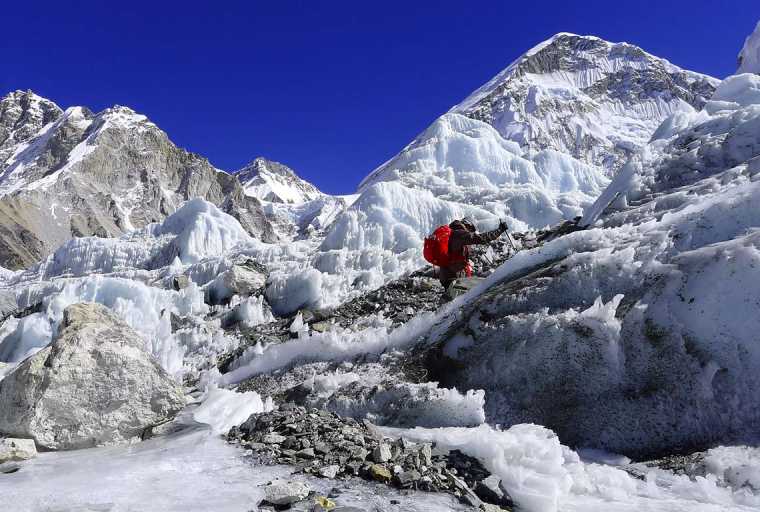
Everest Base Camp Trek | EBC Trekking For 2024/25
Associated with.

Ways You Can Pay
Quick navigation.
- MultiCountry trek and tours
- Nepal Budgets Tours
- Nepal Motorbike Tours
- Adventure Bike Tours
- Day Hikes in Kathmandu
- Cultural and Religious Tours
- Photography Tours
- Legal Documents
- Terms and Condition
- Privacy Policy
- Gear List for Trekking & Climbing
+977 98510 42334
Thamel-26, Kathmandu, Nepal
+614 516 05387
4/8 Florence St
Coburg, 3058, Melbourne, VIC
© 2024 Himalayan Trekkers. All rights reserved.
ISO 9001:2015 Certified
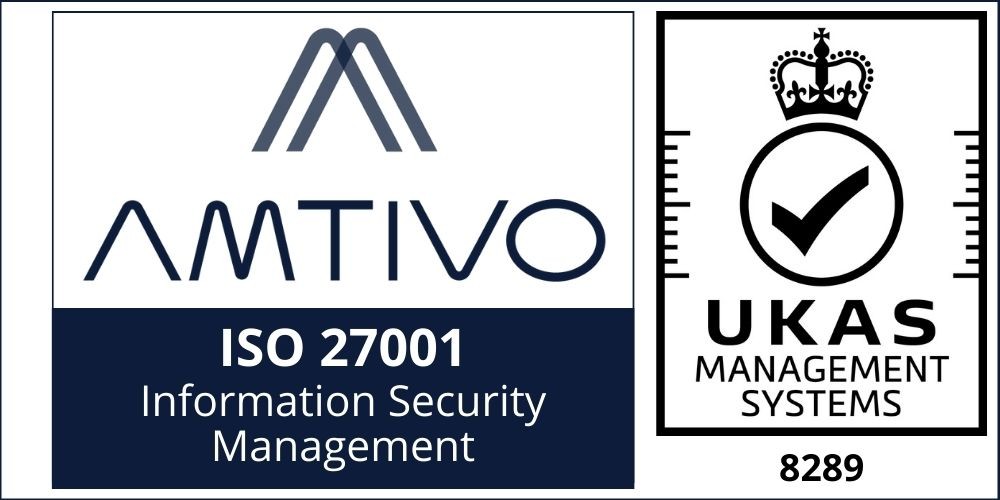
Travel Information for Indians Visiting Nepal
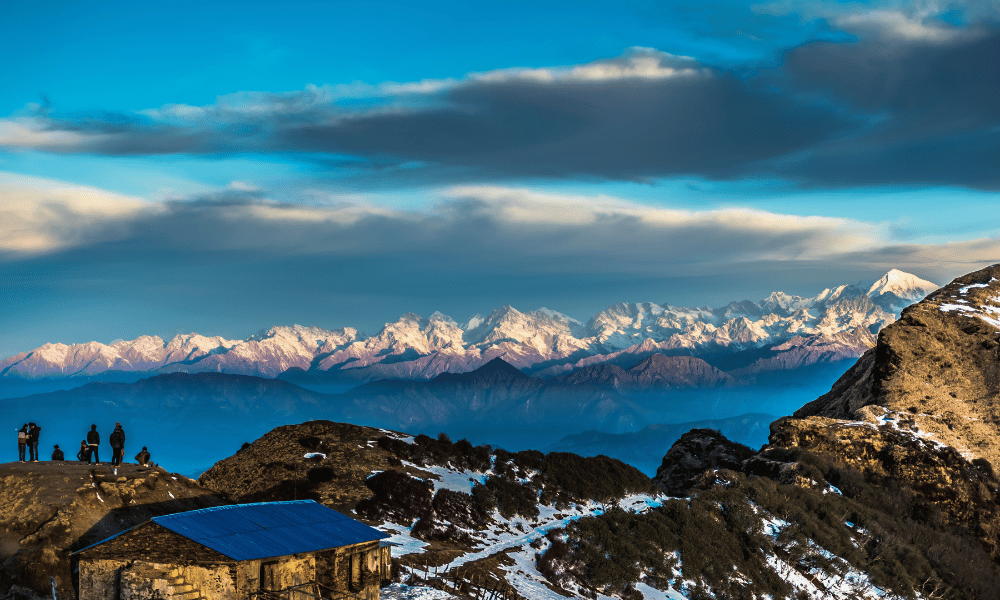
Holidays to Nepal
Nepal is a country of diverse cultures, customs, and geography. The country is known for its amazing natural landscapes, the Himalayas, and the lifestyle of the people. Visiting Nepal for Indian nationals is super easy because of the shared culture (in most dimensions) and values.
Though the geography of Nepal is varied, the people are quite accustomed to the tourism atmosphere as the country mostly relies upon tourism revenue. However, for Indian nationals, understanding the diverse nature of processes, things to do, and the documentation required to enter the country are a matter of concern.
Some of the helpful travel information to gather before entering the country is provided here for the understanding of Indian nationals who are willing to visit Nepal.
Table Of Content
Travel document, covid-19 travel requirements, vehicle and transportation, domestic flights in nepal, entrance fees, food and beverages, weather conditions, health and safety, optional activities, travel etiquettes.
For an Indian National to visit Nepal, a visa is not required. However, it is important to note that this exemption is only intended for Indian citizens and other nationals who need to obtain a visa to enter Nepal.
For NRIs (Non-Residential Indians), a visa is required to enter the country. Visas can be obtained on arrival at the point of entry (at the Airport), apply online, or visit the consular or embassy of Nepal in the respective country.
Procedures to Apply for Visa for People Other than Indian Citizens (Source: Embassy of Nepal, New Delhi )
All individuals intending to travel to Nepal need to submit an online application for a visa in the portal of the Department of Nepal Immigration.
For online application from Nepali Missions abroad, please go through the following link: https://nepaliport.immigration.gov.np/onlinevisa-mission/application
For online application before arriving in Nepal from Nepal Immigration, please go through the following link: https://nepaliport.immigration.gov.np/online and for online application after arriving in Nepal from Nepal Immigration, please go through the following link: https://nepaliport.immigration.gov.np/ and apply at the Visa-On-Arrival section.
The printed copy of the visa form generated online needs to be submitted at the Embassy along with the hard copy of the passport and its photocopy, visa copy of India/copy of the relevant document.
The required fee should be paid in local currency at the Embassy.
After following the due procedures, the Embassy will issue the appropriate visa to the applicant. For tracking the status of the visa application, follow the link: https://nepaliport.immigration.gov.np/visa-application-track
Please go through the following link for more information on Nepali tourist visa: https://in.nepalembassy.gov.np/visa/
Please go through the following link for further information on Nepali immigration: https://www.immigration.gov.np/
For any queries on the issues related to Nepali visa, please kindly contact the Consular Section of the Embassy at phone no. 01123476212, +232, +221.
Nepal Tourist Visa Fee:
Though there is an exemption on visas for an Indian citizen to visit Nepal, some documents are required for verification and the immigration process. This is applied to the Indian nationals travelling to Nepal having their legal status as a citizen of India.
Effective from 1st October 2000 an Indian citizen over the age of 18 years travelling between India and Nepal by air would have to keep in his/her possession any of the following documents to establish his/her identity as an Indian citizen.
Since the pandemic has hit most of the world now, the post-COVID travel scene is different as per the country. This has forced the travel industry to adapt to the new set of regulations. As per the regulations set by the government of Nepal, if you are traveling from India to Nepal, you are required to have a vaccination certificate or a negative PCR certificate tested within 24 hours of departure. An International Traveler Form as provided by CCMC should be filled out before departing from India.
This information is as per the present scene and in the future, the regulation may change or be modified according to the decision of the Ministry of Health, Covid Control Management Committee, Nepal.
International Airport Arrival Procedures
Indian Nationals who are visiting Nepal, need to go through Immigration at the International Airport of Nepal. After fulfilling the immigration requirements, proceed towards the baggage collection and Arrival exit.
The airport arrival process is easy for Indian citizens as there is no need to obtain a visa, considering the person entering the country is carrying either a Valid Indian Passport, Voter ID, or emergency certificate issued by the Embassy of India in Nepal.
If the person is traveling to Nepal, having their arrangements made by Holidays to Nepal Pvt. Ltd., a representative from the company will be at the main exit gate, displaying the name as discussed prior to arrival. This will make the pick-up process easy and the swift arrangements will come into effect after the arrival of the traveler. The rest of the domestic travel process can be discussed at the accommodation facility of the tourist.
Upon arrival, you can connect to the available wifi at the airport and contact us to update your situation on the arrival process. We can inform our representatives and ask him/her to prepare accordingly.
As of now, there isn’t any duty-free facility at the Tribhuvan International Airport in Nepal. In the near future, we can expect to have a duty-free service at the airport. However, there are Duty Paid shops with limited capacity in the Departure terminal to serve travelers.
Currency/Payments
The nepalese rupee (nepali: रुपैयाँ; symbol: रु; code: npr) is the official currency of nepal. the currency of nepal is pegged with the indian currency (inr) at the rate of 1.6. (i.e. inr 1= npr 1.60)..
It is also important to note that as per the circular issued by the Reserve Bank of Nepal, Indian currency having a denomination of 100 or less is accepted all over the country. But if you are traveling to Nepal, you do not have to worry about currency issues or having to carry a hefty sum of 100 rupees. The local money exchange or travel companies can easily exchange your money with any denomination to NPR.
“If you are worried about paying the travel company, we accept Indian currency and also if you need any exchange facility, we can help you do that.”
For the Payment process, you can transfer the amount to the SBI Bank of Nepal from the SBI Bank of India. Or you can transfer the amount to our Indian bank accounts. The account details will be provided in private mail.
The vehicle and transportation for Indian tourists are governed by the tourist vehicle association and provided by travel companies. The vehicle charges differ according to the type of vehicle required. In Nepal, the charge of the vehicle is not determined on a mile basis, instead, it's on the basis of sightseeing and places you visit.
Mostly, we organize private trips. So we only provide vehicles on a private basis. However, SIC transfers between some prominent cities of Nepal are available for people who want to explore Nepal in a sufficient time period.
We provide vehicle services to tourists visiting Nepal. In most cases, the vehicle is included in the tour cost. However, if you have requested vehicle-only service, the cost as per the itinerary will be provided. The disclosure on a lump-sum basis will not be entertained as there are varied determinants that decide the cost of the vehicle. However, for the add-on plans set during the trip, pro-rata charges according to the places you visit will be applicable.
Most of Nepal is untouched by the railway facility. Only one railway service is available in Nepal and that too is in the lowlands of Janakpur. It connects the Nepal and India border. To visit most of the country, you either have to take flights, a helicopter, or the drive option. But if you are planning to reach the remote mountains of Nepal, you may have only the option to trek in the mountains.
Most of Nepal is connected by domestic flights. So, you may have to reach some of the places, depending upon the itinerary tailored, by flight. In such cases, we provide airport transfers. Some of the major tourist places such as Kathmandu, Pokhara, Chitwan, Janakpur, Lumbini, Mustang, Lukla, etc. have flight accessibility. However, in the case of Lukla, a flight is the only option to reach there.
During the boarding process of a domestic flight, any of the aforementioned travel documents are required for the passenger verification process.
There are some remote mountain areas, where only small aircraft such as twin otters or STOL aircraft provide flight services. In such fleets, there are chances of cancellations and delays due to rapidly changing weather conditions. In such cases, if the vehicle transportation is accessible, you will be escorted via vehicle. But if that’s not also the case, you will have to wait until the flight becomes functional. This is mostly applicable for the flights to Lukla and Jomsom.
Entrance fees are collected for the welfare and development of the place. In most tourist places, entrance fees are applicable. However, for Indian nationals, entrance fees are exempted in some places, and in some places the fees are lower than the foreigners. This is mainly due to the neighboring bond and bilateral relations between the two countries.
For instance, in Pashupatinath temple, Indian nationals do not have to pay entrance fees. These charges are mostly excluded from our trips. And travelers are required to pay the entry charges at the point of entrance fee collection. This makes the due process convenient for the travelers as well as the company.
Nepal is a country of multi-ethnicity and cultural attributes. This country, ever since the beginning of civilization, has been ranked as a culturally enriched and diverse place. In such a small territory, there are diverse cultural groups with their own food and beverages.
In most of the places you visit, you can get Dal Bhat Tarkari. In the eateries of Kathmandu, Pokhara and other urban tourist cities, you can easily get other continental and fusion food items. However, during trekking time in the remote mountains, eating what’s there may be the only choice.
For vegetarian Indian citizens, there are so many Indian vegetarian and vegan restaurants in Kathmandu and Pokhara . In every place, if you are a vegetarian, you can request a veg food item. Hotels also provide vegetarian food as per the choice of the traveler.
If you are fond of beverages, you can get local and international beverage items in the urban cities of Nepal. In remote places, that may not be an affordable luxury.
The weather condition is also an important factor to understand in Nepal. If you are traveling to Nepal in Spring and Autumn, the weather and climate are moderate. The visibility is clear and the temperature is moderate with a pleasant atmosphere. In these months, the chances of flight delay and cancellation are also low.
Table: Kathmandu Temperature, Source: Weatherspark
During peak monsoons, during the months of June and July, traveling can be difficult due to frequent rainfall and flight delay. However, if you are traveling via the drive option, it is still possible and quite safe to visit some of the places in Nepal.
Table : Average Rainfall, Source: Weatherspark
The Winter season is also a good time in terms of the places you visit. However, if you are traveling to explore mountains, you might not get clear visibility. But for pilgrimage and leisure purposes, every month in Nepal is enjoyable and offers a wonderful experience in the incredible Nepali hospitality.
Spring, Summer, and Autumn have moderate temperatures. A light jacket and summer cloth will do in most places. However, if you are planning to visit the higher mountain areas of Nepal, depending upon the weather, you may have to carry winter jackets and clothes. Winter clothes are important during the winter season. In the outskirts of the valleys and higher elevations, there are chances of snowfall and light rain. So, carrying appropriate clothes to stay safe from frostbite and cold is important.
Health and Safety is also major concern when visiting a foreign land. If any health issues are encountered during the trip, there are many well-equipped hospitals in Nepal for your medical assistance. If you are worried about safety issues, Nepal is one of the safest countries for visitors.
The people in Nepal are hospitable. The guests in Nepal are treated with the utmost respect and given value. However, if you have encountered any issues and something doesn’t feel right during your trip, you can always get emergency support from the security personnel and even your associated travel company can assist you in the process.

Some Health and Safety Tips for Your Nepal Trip:-
Don’t use tap water in Nepal. It’s best to use mineral water.
Always eat at a good restaurant and eatery where hygiene is maintained.
If you are travelling to high elevations in the mountains of Nepal, it is best to avoid cigarettes and alcoholic beverages. Alcoholic beverages sometimes trigger altitude sickness.
Eat healthy foods.
If you are visiting Muktinath temple and other high elevation areas, there are chances of High Altitude Sickness. So, it’s important to remain hydrated and energised.
If you have any health issues or previous medical history, it's better to consult your physician before travelling to the higher elevations and inform your travel agent of the same.
While hiking in the mountains, stay on the uphill side of the trail to let the Donkeys and Mules pass.
During hiking, stay on the trail to avoid leeches. Use salt to get rid of them and be extra careful during the monsoon season.
In case you are lost, try to contact your operator. If that’s not accessible, try returning the same way you came and get support from the locals. If you are in a difficult situation and not able to find your way back, contact your tour operator and tourist police.
It is always safe to trek or hike with a local companion or a guide.
Wear sunglasses if you are in exposure to bright sunlight, especially in the snow.
You can experience so many available adventurous things in Nepal beyond a scheduled itinerary. Some adventure to the trip gives a wonderful touch to the experience. Everest Mountain Flight, Paragliding, Mountain Biking, Bungee Jumping, Canyoning, Jungle Safari in Chitwan, hiking, etc. are some of the options to explore in Nepal.
If you are keen to explore adventure activities in Nepal, visit Things to Do in Nepal . These optional activities are a part of add-on plans. And are not by default included in the package. So, if you want to do any of these activities, the cost will be raised separately.
Nepal is shaped by nature and culture. It has been one of the incredible places to explore due to its varied lifestyle, customs and geography . If you are traveling to Nepal, there are several things that you should know to maintain a healthy bond among the people of the places you visit.
Namaste is a welcoming act. You should always respond by saying the same. Putting palms together to show integrity and respect is something Nepalese people do to welcome their guests.
Do not enter temples and monasteries by wearing shoes. Leather jackets and shoes are also not appropriate clothing while visiting religious places.
Respect people around. No matter how they look, where they are, or what they do, giving respect always helps to maintain a healthy atmosphere and hospitable environment. It is not a travel etiquette but a dire need for humanity.
While staying in a hotel, if you have any complaints, you can politely ask the front desk personnel to make the necessary arrangements. If the problem is still not solved, asking your tour operator is a convenient way to sort the issue out.
Don’t hurt the sentiment of other people by sabotaging somebody’s character, ethics or morale. Nepal is mostly a Hindu country, so Hindu sentiments are widespread around.
Don’t take photographs in the ‘No Photo’ zone.
Do not litter.
Public display of affection is considered indecent in Nepal.
Market and Shopping
If you are traveling to Nepal, you can buy some souvenirs or necessary items in the Nepalese market. Thamel, Lakeside, Patan, and Durbarmarg are some popular areas to get clothes, handicrafts, footwear, and several other items. There are a lot of shops around.
In every tourist place you visit, there’s something you can buy. The local items carry a memoir of the visit and are a symbol of the travel spirit. In the evening, you can explore the nightlife in Thamel and Durbarmarg.
Would you like to book an activity or a trip with us?
Get in touch with our experts right away and finalize an experience!
Call Us Now
Similar blogs.
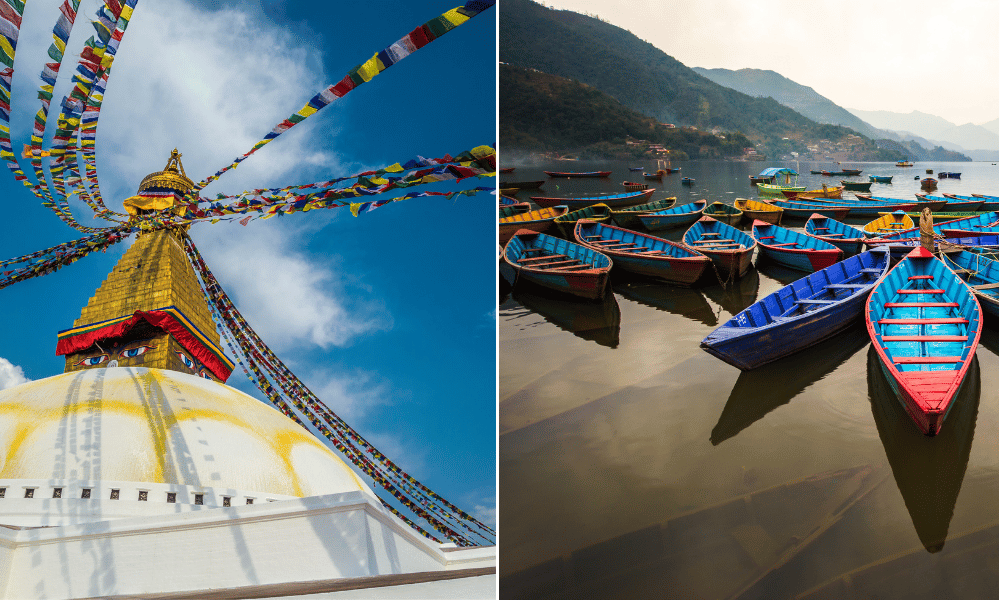
Best Time to Visit Kathmandu and Pokhara
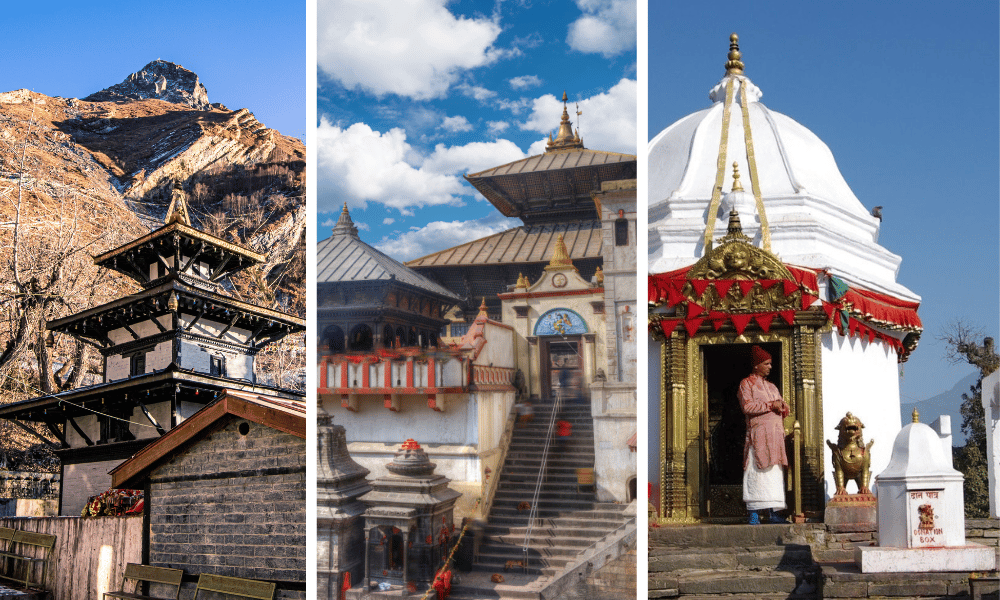
12 Must Visit Hindu Temples in Nepal
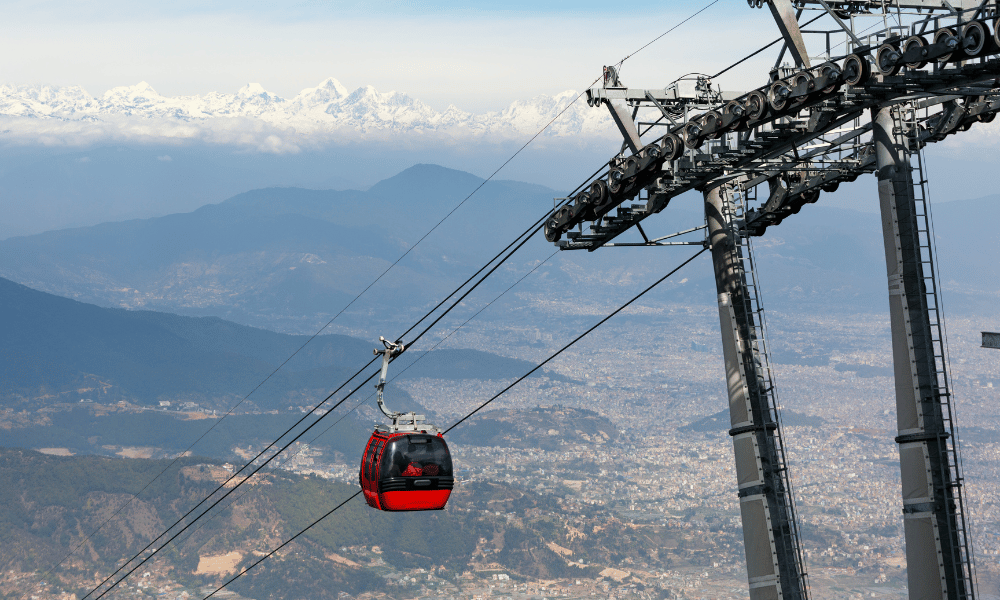
Cable Cars in Nepal
We use 🍪 cookies to ensure you get the best experience on our website, serve personalized ads or content, and analyze our traffic.
The Best Ways of Traveling From India to Nepal
:max_bytes(150000):strip_icc():format(webp)/10947453_10153084623948270_8191342691038933499_o-591d1e8d3df78cf5fa731909.jpg)
Want to take a side trip from India to Nepal? It's a popular thing to do and there are a number of ways to go about it, depending on how much money you're prepared to spend. This guide outlines the best options for travel.
Do note that Indian citizens don't require a visa to enter Nepal. However, if traveling by air, Indian citizens must show a valid passport or Voter ID when checking in, and at immigration. Aadhaar Card is not a satisfactory form of identification. If traveling overland, other forms of government-issued identification can be used at border crossings. However, it's likely that no one will even be bothered to check.
Foreigners can obtain a Nepali tourist visa on arrival at the airport in Kathmandu. Nepali tourist visas are also available from immigration at land border crossings that are open to foreigners. In addition to your passport, you'll need passport-sized photos and possibly foreign currency (some crossings insist on payment in US dollars).
Delhi to Kathmandu
If you want to fly (and get some incredible Himalayan views), Delhi to Kathmandu is the least expensive, least time-consuming route by air to Nepal (under two hours). Otherwise, the best option is to take a train to Gorakhpur and then a bus. Taking the bus all the way has become slightly more appealing since the Delhi Transport Corporation launched a direct service to Kathmandu. However, it's still a long 25-hour haul.
Varanasi to Kathmandu
Many people travel overland from Varanasi to Kathmandu, either by bus, or train and bus combination. It takes less time than overland from Delhi (around 15 hours). It's also possible to fly. However, it's much costlier than from Delhi and there are very few direct flights.
Kolkata to Kathmandu
Nepal-based Buddha Air operates three direct flights a week from Kolkata to Kathmandu: on Mondays, Wednesdays and Fridays. The flights depart at 9.05 a.m. and the flight time is about 90 minutes. Expect to pay about 20,000 rupees one way. Air India also operates direct flights for a slightly cheaper cost, starting at 15,000 rupees. Alternatively, you can go by land via the Raxaul or Panitanki borders (see more below).
Via the Sunauli Border Crossing
Most people going overland from north India to Nepal pass through the Sunauli border to Bhairahawa in central Nepal, accessible from rather unappealing Gorakhpur in Uttar Pradesh (although, pleasingly, Gorakhpur has become a lot cleaner in recent years). This is the biggest and busiest India-Nepal border crossing. There are frequent connections to Kathmandu, Pokhara, and Lumbini from there.
Via the Raxaul Border Crossing
The Raxaul border crossing to Birgunj in southern-central Nepal is accessible from Patna in Bihar . It's most convenient for anyone traveling from Bodh Gaya or Kolkata. There are direct trains from Kolkata to Raxaul (16 hours). From Bodh Gaya, it's quicker to take a bus or car and travel by road as opposed to train (13 hours). From the border, buses take six to seven hours to reach Kathmandu and eight hours to Pokhara. Shared jeeps to Kathmandu are a quicker option and only take four to five hours.
Via the Panitanki Border Crossing
The Panitanki border crossing, to Kakarbhitta in far eastern Nepal, is accessible from Siliguri in West Bengal. It's most utilized by people traveling from Darjeeling, Kolkata, Sikkim and the rest of northeast India . Buses, taxis and shared jeeps run to the border from Siliguri, Kalimpong, and Gangtok in Sikkim. Siliguri to Panitanki (for those going from Darjeeling) takes approximately 45 minutes to an hour. Though the border crossing is open 24 hours, the Indian and Nepali immigration offices close are only open from 7 a.m. to 10 p.m. so foreigners should ensure that they arrive within this timeframe. There are regular buses to Kathmandu (14 to 16 hours) and Pokhara (15 hours) from Kakarbhitta. It's worth stopping at Chitwan National Park on the way to break the journey. Get off the bus at Sauraha (nine hours from Kakarbhitta), which is the closest town and travel hub to the park.
Via the Banbasa Border Crossing
This border crossing, at Banbasa in Uttarakhand , is the most westerly crossing into Nepal from India. It's the quickest, and most rural, route from Delhi to Kathmandu. Yet, it's still a long way from Mahendra Nagar (now officially called Bhimdatta) on the Nepali side of the border to Kathmandu. Buses take about 15 to 17 hours. Banbasa can be reached from Bareilly, Rudrapur, or Haldwani in Uttarakhand (three hours). It's possible to get buses to Pokhara and Kathmandu from Mahendra Nagar. If you're not short on time, it's worth visiting Bardiya National Park on the way (get off at Ambassa, about five hours from Mahendra Nagar. Thakurdwara is the closest village to the park and it's about 40 minutes from Ambassa).
Other Border Crossings
Two other border crossing points (from Jamunaha in Uttar Pradesh to Nepalganj in western Nepal, and Gauriphanta in Uttar Pradesh to Dhangadhi in far western Nepal) are open to tourists. However, they're difficult to reach and rarely used. Non-official border crossings at Janakpur, Biratnagar and Ilam rarely allow foreign tourists.
There are a few popular choices depending on whether you're traveling by air or overland. Delhi to Kathmandu is the cheapest and quickest (less than two hours) route by air to Nepal.
If traveling by bus or train, though, Varnasi to Kathmandu is the most popular route.
Varnasi to Kathmandu is the most popular route by train, but there are also direct trains from Kolkata to Raxaul.
Varnasi to Kathmandu is a popular route for traveling by bus. Additionally, from Bodh Gaya to the Raxaul border, it's possible to take a bus or car.
How to Travel From Delhi to Kathmandu by Train, Bus, Car, and Plane
The 9 Best Things to Do in Gorakhpur, India
India Nepal Sunauli Border Crossing Tips
A Summer Exploring the Culture and Sights of Ladakh
How to Travel From Varanasi to Kathmandu by Train, Bus, Plane, and Car
How to Go Teahouse Trekking in Nepal
Your Trip to Nepal: The Complete Guide
12 Diverse Ways and Places to Celebrate Diwali in India
The Ultimate Guide to the Taj Mahal in India
Permits for North East India and What You Need to Know
Guide to India's Mahaparinirvan Express Buddhist Circuit Train
The Top 15 Destinations in Nepal
Your Ultimate Trip to India: The Complete Guide
Vital Information for the First-Time Visitor to Thailand
India Travel: Issues to Know at Top Tourist Places
How to Travel From London to Paris by Train, Bus, Plane, and Car
Cookies on GOV.UK
We use some essential cookies to make this website work.
We’d like to set additional cookies to understand how you use GOV.UK, remember your settings and improve government services.
We also use cookies set by other sites to help us deliver content from their services.
You have accepted additional cookies. You can change your cookie settings at any time.
You have rejected additional cookies. You can change your cookie settings at any time.
Register to vote Register by 18 June to vote in the General Election on 4 July.
- Passports, travel and living abroad
- Travel abroad
- Foreign travel advice
Entry requirements
This advice reflects the UK government’s understanding of current rules for people travelling on a full ‘British citizen’ passport from the UK, for the most common types of travel.
The authorities in Nepal set and enforce entry rules. If you’re not sure how these requirements apply to you, contact the Embassy of Nepal in the UK .
COVID-19 rules
There are no COVID-19 testing or vaccination requirements for travellers entering Nepal.
Passport validity requirements
To avoid problems at immigration, make sure your passport has an ‘expiry date’ at least 6 months after your date of entry into Nepal.
Check with your travel provider that your passport and other travel documents meet requirements. Renew your passport if you need to.
You will be denied entry if you do not have a valid travel document or try to use a passport that has been reported lost or stolen.
Checks at border control
At border control, you may need to show:
- a travel insurance document which has cover for healthcare costs including repatriation and other emergencies while you are in Nepal
- confirmation of where you will spend your first night, for example, a hotel booking
Visa requirements
You can get a Nepal visa online up to 15 days in advance of your arrival. You can also queue up to get a tourist visa on arrival, but payment must be made in cash, with US dollars being the preferred currency. Applying in advance can reduce the time it takes you to pass through immigration. Visas are available for several lengths of stay at various costs. Look on the immigration department website for the options and how to apply .
Overstaying your visa in Nepal is a serious crime, and can lead to significant fines or imprisonment.
Vaccination requirements
At least 8 weeks before your trip, check the vaccinations and certificates you need in TravelHealthPro’s Nepal guide .
If you are arriving in Nepal directly from certain countries in Africa and Latin America, you will need to show a yellow fever certificate to enter Nepal.
Customs rules
There are strict rules about goods you can take into or out of Nepal. You must declare anything that may be prohibited or subject to tax or duty.
Bringing precious metals into Nepal is strictly regulated. You can carry gold ornaments up to 50 grams and silver ornaments up to 100 grams. If you bring in undeclared gold or silver, you may:
- get a fine equivalent to the value of the goods
- go to prison for between one month and 5 years depending upon the value of the goods
- have the goods confiscated
- be detained during the proceedings
Taking money into Nepal
When you arrive in Nepal, declare on your customs declaration any amount above the value of 5,000 US dollars in banknotes or 10,000 dollars in notes and travellers cheques combined. Customs will give a certified declaration which you must keep. You will need to convert all your Nepali currency before you leave Nepal, and the bank or exchange counter at the airport may ask you for the declaration.
ATMs are not reliable outside main tourist sites.
Related content
Is this page useful.
- Yes this page is useful
- No this page is not useful
Help us improve GOV.UK
Don’t include personal or financial information like your National Insurance number or credit card details.
To help us improve GOV.UK, we’d like to know more about your visit today. Please fill in this survey (opens in a new tab) .

- Visa Application Helpline
Subscribe to our newsletter
Learn how to live a sustainable long-term travel lifestyle.
By signing up, you agree to the our terms and our Privacy Policy agreement.
Top 27 Places to visit in Darjeeling, Explore the Beautiful Hills of Darjeeling
Top 10 things to do when traveling to shimla: shimla travel guide, the ultimate paris travel guidelines for first timers | top attractions & things to do.

The Best Routes for Travel to Nepal from India by Road
Are you planning to travel from India to Nepal? Taking the road route through India is possible, but you need to know the disadvantages and challenges before starting on this journey. Here is our guide Travel to Nepal from India by Road.
Have you purchased travel insurance ? I am sure you know that travel can be a risky business nowadays. Taking a holiday involves an element of risk that may not be present in your day-to-day life. Read here How to Buy The Best Travel Insurance: A beginners’ guide . To protect yourself in illness or injury situations while abroad, please purchase travel insurance .
WHAT IS COVERED IN THIS ARTICLE?
How to travel to Nepal from India by road?
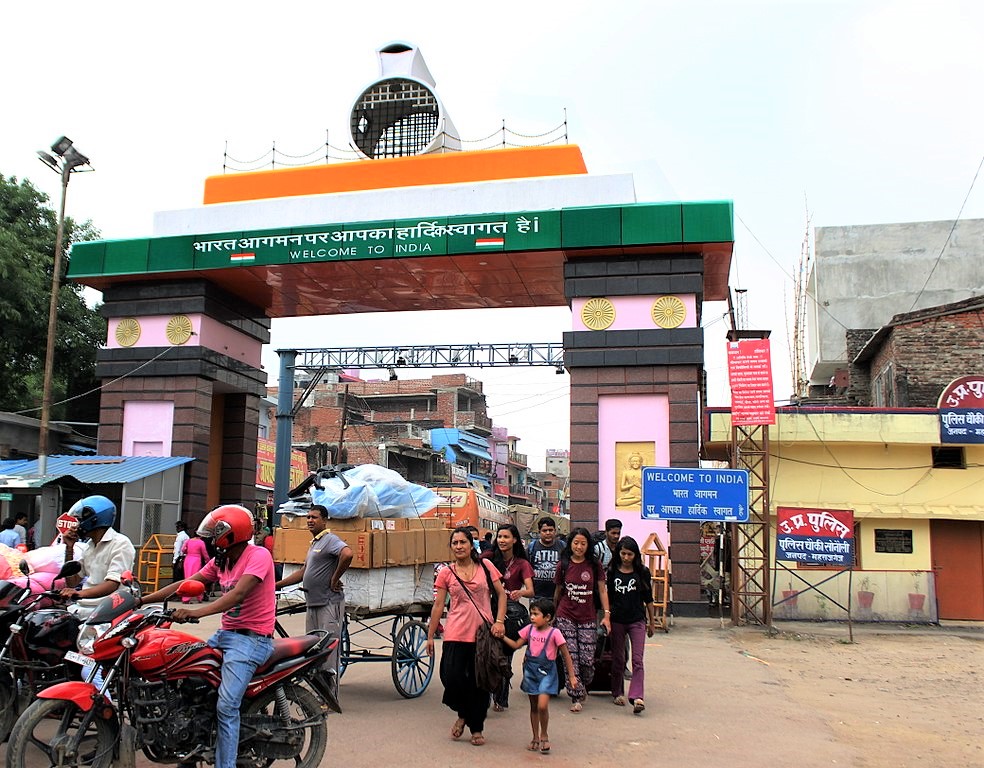
India and Nepal have six border crossings and these two neighbouring countries have a great relationship in terms of travelling. Indians don’t need visas to travel to Nepal and if you are going through the land route you may need an identity card issued by the government. Almost 17% to 20% of foreign travellers to Nepal are Indians. As an Indian, you can stay indefinitely once you register yourself in the Indian Embassy in Kathmandu after 6 months of your residence. The relationship between India and Nepal has made travel to Nepal from India by road as easy as crossing borders inter-state.
Documents required to enter Nepal from India by road.

Before Covid, the Sunauli or border between India and Nepal has never been closed as the countries are maintaining an open border system. As per the treaty of 1950, the treaty of Peace national treatment is given to the citizens of both countries.
Most Indian vehicles and citizens and residents near the border didn’t even need legal documents to cross the border. But as per the rule, these are the documents you must carry to travel to Nepal from India Indian Citizens must carry a valid photo ID issued by the government Foreigners travelling to Nepal through India should carry a valid passport. Post-Covid the rules have changed as it is mandated to produce a valid COVID negative report like RT-PCR, True NAAT, WHO accredited test that has been taken within 72 hours of crossing the border.
How to go Nepal by road
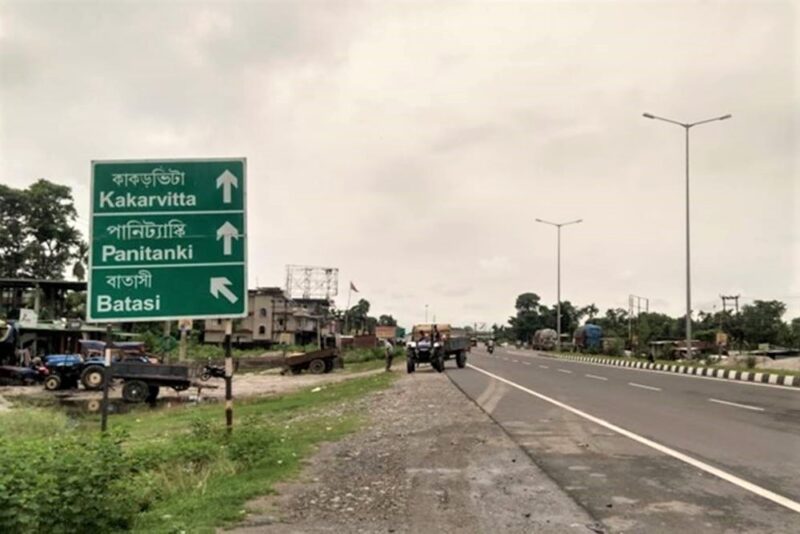
The best way to travel to Nepal from India by road is either by bus or private car. There is also a third option to travel to Nepal from India by road is a train. If you want to choose public transport there are direct buses from Delhi to Kathmandu for travel to Nepal from India by road. Though Getting private cars or owned cars is the most popular practice by Indians travelling to Nepal.
India to Nepal travel restrictions: Tips to remember for travel to Nepal from India by Road for Indians
At the border crossing make sure to collect the permit while paying for the toll. As of now, travelers from India to Nepal are no longer required to provide a Covid negative report by RT-PCR or any other reputable institution taken within 72 hours of crossing the border.
However, it is still recommended to follow all necessary safety protocols and guidelines to ensure the safety of oneself and others while traveling during the pandemic.
India to Nepal bus ticket price
The bus ticket price from India to Nepal can vary depending on the starting location in India, the destination in Nepal, the type of bus, and the time of year. Generally, the price range for a one-way bus ticket from major Indian cities such as Delhi, Kolkata or Varanasi to Kathmandu, Nepal’s capital city, can range from INR 1000 to INR 3000 or more.
However, prices may be higher during peak travel season or for more luxurious buses with added amenities. It’s best to check with bus companies and ticket booking websites for specific prices and schedules.
Where can you cross to Nepal from India?
Banbasa Border: Banbasa border is in the state of Uttarakhand in North India. The Banbasa border can be accessed by Indians and Nepalese unrestricted. These are the best routes for Delhites, or anyone from the North-western states like Haryana, Punjab or any of the international travellers arriving in Delhi. It takes approximately 6 to 7 hours from Delhi to reach by private car and the picturesque serene view of the border with mountain ranges in the backdrop and the dam while crossing the bridge is extremely heartwarming. Birgunj-Raxaul Border: The Birgunj-Raxaul border is the most accessible option for those who are travelling from Bihar, Chhattisgarh, Odisha. The Raxaul border crossing in the state of Bihar leads you to the central part of Nepal, Birganj. Birganj is 8 hours from Kathmandu and 6 hours from Pokhara. To reach Kathmandu or Pokhara you will easily get buses or shared jeeps for $4 to $5 that is around 450 INR to 550 INR. Panitanki border: Panitanki border is in the Siliguri district, West Bengal and from the Siliguri Bus terminal you will find buses, shared jeeps or renting cars. Buses are available from Jalpaiguri, Sikkim and Kalimpong as well. The Panitanki Kakarbhitta border is open from 6 Am to 7 Pm from the Nepal side. From New Jalpaiguri, the Panitanki Kakarbhitta border is only a 45-minute drive. There are two other borders that are mostly used by large vehicles and very rarely by travellers Jamunaha-Nepalgunj border and gauripantha-Dhangadhi. The Nepalgunj border is yet to open as per the latest news due to COVID.
How to collect permits for vehicles for travel to Nepal?

Because of the easy access through the road, Indian travellers get a lot of duration for access to the vehicle management and stay period in Nepal. Indians can acclaim a Nepalese number plate while crossing the border and the duration to keep the vehicle is generally 30 days.
If you are considering taking a vehicle for travel to Nepal from India by road these are what you need to know according to the Embassy of India :
Any Indian vehicle including two-wheelers can temporarily obtain a stay duration in Nepal with custom payment in border crossing. Even with payment, any Indian registered vehicle is allowed to stay in Nepal only 30 days in a whole year. You can obtain a day pass at the customs near the Indo-Nepal border and the day pass is only valid for 24 hours. The vehicle must return within one day and if you want to extend the pass you must visit the customs before the validity ends. You can also obtain a pass for a specific number of days with a fixed payment for each day. You must collect and keep the pass with you all the time as it may be demanded by government authorities or police. Here is the details what to do and what not
Covid- Regulation to maintain in Nepal tourism.

For Indian travellers for travelling to Nepal from India by road is not restricted if the individuals are vaccinated or not at the local level. Nepal has opened most of its borders since October for Indian travellers and this is the covid restrictions according to news :
Vaccination requirements: Negative PCR is required if you are travelling to Nepal by air. But Nepal tourism is open for both vaccinated and non-vaccinated travellers.
For Indian travellers, a negative test report was taken within 72 hours before crossing. Lockdown In effect: As far as local travel is concerned Nepal is partially locked down which is not going to restrict most of the activities for Indian travellers.
Frequently Asked Questions (FAQs)
How can i go to nepal by road from india.
There are several border crossings between India and Nepal that allow for travel by road. The most popular ones are the Sunauli-Bhairahawa border crossing and the Raxaul-Birgunj border crossing.
Can we go to Nepal by car from India?
Yes, it is possible to travel to Nepal from India by car. However, there are certain requirements and procedures that need to be followed, such as obtaining necessary permits and crossing the border at designated checkpoints.
What documents are required to travel to Nepal from India by road?
To travel to Nepal from India by road, you will need a valid passport, a visa for Nepal (which can be obtained at the border), and a permit for your vehicle (if you are driving). It is also recommended to carry proof of insurance and vehicle registration documents.
Can you cross the border from India to Nepal?
Yes, it is possible to cross the border from India to Nepal by road. There are several border crossings between the two countries, including the Sunauli-Bhairahawa border, the Raxaul-Birgunj border, and the Banbasa-Mahendrenagar border. However, it is important to check the current border regulations and entry requirements before making the journey.
Which countries are allowed to travel to Nepal?
Nepal is allowing travellers from most countries except 8 South African countries i.e. Botswana, Namibia, Zimbabwe, South Africa, Lesotho, Eswatini, Mozambique, Malawi and Hongkong. Nepal has banned travellers from arriving from or through these countries.
Can foreigners travel to Nepal from India by road?
Foreigners except from 8 SAR countries and Hongkong can travel to Nepal from India by road with the right documents, passport and visa. Only Indians are allowed to travel to Nepal without a visa.
Do Indians need Visa to travel to Nepal from India by road?
Indians do not need visas to cross the Nepal border, but they do need a negative Covid report for entry to Nepal.
Related Posts
Maldives travel guide: tourist places, culture & budget breakdown to plan a trip to maldives, top 25 best countries to visit: your ultimate travel destination guide, the ultimate china travel guide: unlocking china’s splendors, the 20 best things to do in medina: make your pilgrimage even more satisfying, 11 comments.
After crossing nepal border,we do not want to run car but want to park for 4 days. Question is can we do this then where and what will be parking fee
Hi Narinder Pal Singh, thank you for your comment. I’m not sure which border you are referring to, but personally, I find it difficult to locate parking spots online in Nepal. In such situations, I usually prefer to drive straight until I come across a mall, as they usually have parking lots available. Additionally, I would also ask locals for recommendations on safe overnight parking areas. I hope this information is helpful to you.
Can I travel by my private car from Kolkata to Nepal ? Is road is open National Highway 19
I am sorry i don’t know how to drive from Kolkata to Nepal.
@Niels, Did you cross from Panitanki (I also hold a danish pas)? @Hassan What authorities (what number) should I use? There is only a little info on the web.
Hello Khem For, general enquiries related to the Panitanki Indian-Nepal land border, please call +91-3592-220 809 or send an email to [email protected] .
Sir can you tell me about the road conditions from butwal to Kathmandu ]
Hello Samir, The journey from Butwal to Kathmandu is a long one, taking a minimum of 9 to 10 hours. However, the road conditions are not ideal, with numerous potholes and bumps along the way. This makes the busy stretch of the East-West Highway a potential hazard for accidents.
Sir Wanted to know, how is road conditions from Nepalganj to other parts of Nepal
Where can I, as a Danish citizen, enter Nepal and exit? I wish to enter from the east side near Mechinagar or close to is side of Nepal. I know Gorakhpur but is there other places? All the best Niels Adrian Petersen
Hi there. I hope that Visitors from Denmark won’t have any problem getting into Nepal or India using the land border. The nearest border crossing checkpoint from Mechinagar is Kakarbhitta or Raniganj. Please always double check information with authorities to avoid any delays or unpleasant experiences.
Save my name, email, and website in this browser for the next time I comment.
This site uses Akismet to reduce spam. Learn how your comment data is processed .
Type above and press Enter to search. Press Esc to cancel.

Authorized Portal for Visa Application to India Indianvisaonline.gov.in
All foreign nationals entering India are required to possess a valid international travel document in the form of a national passport with a valid visa from an Indian Mission/Post or eVisa (Limited Categories) from Bureau of Immigration, Ministry of Home Affairs.

Visa on Arrival for the nationals of Japan, South Korea and UAE (only for such UAE nationals who had earlier obtained e-Visa or regular/paper visa for India) Available at selected Airports

Advisory: Government of India has not authorized any agent or intermediary to charge any fee for facilitation of emergency / express Visa/eVisa. For travel to India a regular/eVisa along with passport is mandatory. Only categories exempted under bilateral arrangments may not need a visa. For persons of Indian origin (all categories), OCI card is mandatory.

e-Visa - Only Ordinary Passport holders may apply for eVisa application online. Select Visa Service as G20 eConference Visa and purpose as "To Attend G20 Conference/Meeting" .
Regular Visa - Diplomatic/Official/Ordinary Passport holders may fill online application and submit at concerned Indian Embassy/Mission in their country. Select Visa Service as Conference Visa and purpose as "To Attend G20 Conference/Meeting" .
- Logout Login
- Adventure Holidays
- Weekend Getaways
- Driving Holidays
- Travel News
Top Searches
Maasai Mara Migration
Asia Natural Landscapes
Highly Searched Travel Places
White Tiger Zoo
Maharashtra Monsoon Places
Camping in India
Portugal to tighten immigration rules, introduce pre-arrival work visa requirement
Times of India TIMESOFINDIA.COM / TRAVEL NEWS , PORTUGAL / Created : Jun 5, 2024, 19:00 IST
You're Reading
In Portugal, under the new visa regulations, most foreigners will be required to obtain a work visa before arriving, marking a departure from the current practice where individuals can enter on a tourist visa and subsequently appl … Read more
In Portugal, under the new visa regulations, most foreigners will be required to obtain a work visa before arriving, marking a departure from the current practice where individuals can enter on a tourist visa and subsequently apply for a residence permit after securing employment. Read less

More from Travel News

Comments (0)

Refrain from posting comments that are obscene, defamatory or inflammatory, and do not indulge in personal attacks, name calling or inciting hatred against any community. Help us delete comments that do not follow these guidelines by marking them offensive . Let's work together to keep the conversation civil.
Comments ( ) Sort: Newest UpVoted Oldest Discussed Down Voted closecomments

SIGN IN WITH
Or post without registration.

Visual Stories
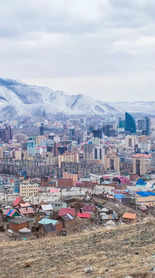
Popular Galleries
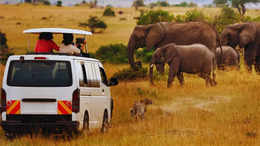
Kenya: Maasai Mara's Great Migration should be on your July wild bucketlist TRAVEL TRENDS , KENYA

Visiting these 5 Southern African countries will soon be possible with a single Schengen-like visa TRAVEL NEWS , SOUTH AFRICA

Most vibrant rainforests from across the Indian states TRAVEL TRENDS , INDIA
Trending stories.
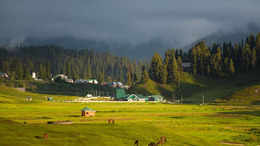
Exploring Kashmir in a 3-day itinerary

- Chefs surpass IT professionals in applying for UK work visa

7 stunning monsoon wedding destinations in India

8 zoos in India where one can spot the majestic white tigers

- People are Googling these 7 places the most for travelling
- 1 Portugal to tighten immigration rules, introduce pre-arrival work visa requirement
- 2 Gulmarg: Iconic 106-year-old Maharani Temple gutted in massive fire
- 3 Rainfall alert: IMD issues alert across India; heavy showers expected in several regions
- 4 Why is collecting beach pebbles not a wise thing to do?
- 5 Jammu administration bans sale and consumption of tobacco products in Katra

THE DEFINITIVE GUIDE TO DESTINATIONS, ITINERARIES, THINGS TO DO, RESTAURANTS, NIGHTLIFE and LOTS MORE!
FOLLOW US ON
Places to visit.
- Places to visit in Bangalore
- Places to visit in Mumbai
- Places to visit in Delhi
- Places to visit in Goa
- Hotels in Goa
- Hotels in Jaipur
- Hotels in Shimla
- Hotels in Mumbai
Things To do
- Things to do in Goa
- Things to do in Mumbai
- Things to do in Bangalore
- Things to do in Delhi
Travel Inspiration
- Visa on arrival for Indians
- Honeymoon Places in india
- Hill Stations in India
- Weekend getaways in Mumbai
- Weather in Delhi
- Weather in Chennai
- Weather in Bangalore
- Weather in Mumbai
Best Beaches
- Goa Beaches
- Mumbai Beaches
- Pondicherry Beaches
- Kerala Beaches
- Restaurants in Bangalore
- Restaurants in Chennai
- Restaurants in Pune
- Restaurants in Jaipur
- Hill Station near Delhi
- Winter trip to Ladakh
- Places to visit in Kerala
- Winter Honeymoon Destinations
- UK visa guide for Indians
- Winter Trip to Manali
- Vaishno Devi Yatra
- Special Train Ticket Booking
- HP inter-state Bus
- Honeymoon Destinations India
Latest News
- Goa beyond beaches: Best ustainable places to visit in Goa
- Gulmarg: Iconic 106-year-old Maharani Temple gutted in massive fire
- Why is a visit to Lucknow a must for every traveller?
Congratulations!
You have been successfully added to the mailing list of Times of India Travel. To complete the subscription process, kindly open your inbox and click on the confirmation link which has been emailed to you.
Share with friends
Thank You for sharing! Your friend will receive the article link on email mentioned.
- (For more than one recipient, type addresses separated by commas)
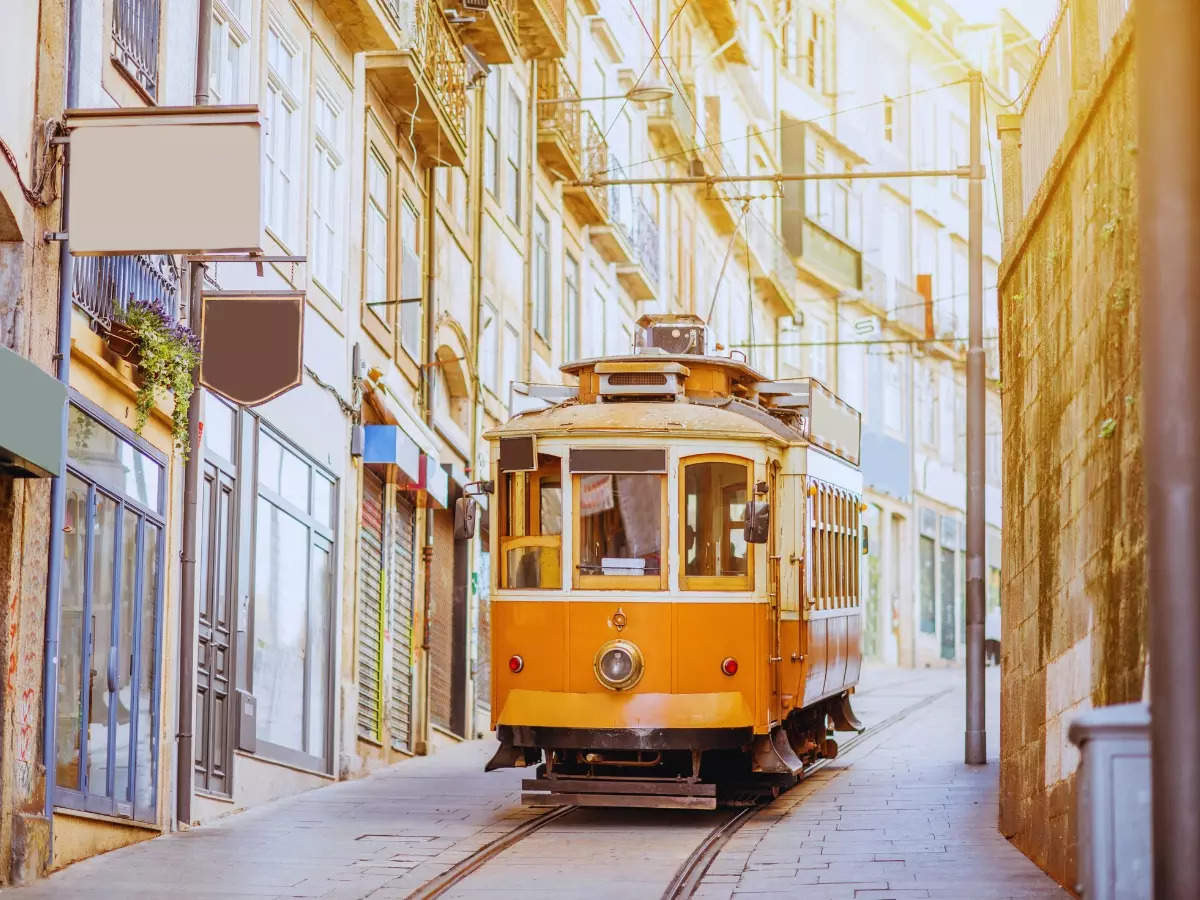
In Portugal, under the new visa regulations, most foreigners will be required to obtain a work visa before arriving, marking a departure from the current practice where individuals can enter on a tour...

Qatar is welcoming 102 countries visa-free, check your visa status here .

Visit Qatar App Explore things to do in Qatar!
Select your language
Get eVisa info

Plan your trip
Visa details
Citizens of over 102 countries are eligible for a visa-free entry to the State of Qatar. Allowable lengths of stay vary, and visitors are kindly advised to check with an authorised entity for the terms and conditions that apply.
Visa requirements
Visiting Qatar made easy
Visitors from all around the world can enter Qatar either by obtaining visa on arrival, or by filling out simple online applications, depending on the passport they carry.
This webpage is designed to keep you up-to-date on the visa policies that are relevant to you, and the process you need to follow to apply for a visa, if necessary.
Visa-free entry
Nationals of eligible countries do not require any prior visa arrangements and can obtain a visa waiver upon arrival to Qatar, by presenting a valid passport with a minimum validity of three months and a confirmed onward or return ticket.
For nationals of the countries/regions listed below, the waiver will be valid for 30 days from the date of issuance and entitle its holder to spend up to 30 days in Qatar.
Andorra, Australia, Azerbaijan, Belarus, Bolivia, Bosnia and Herzegovina, Brazil, Brunei, Canada, Chile, China, Colombia, Costa Rica, Cuba, Ecuador, Falkland Islands, French Guiana, Georgia, Guyana, Hong Kong, India, Indonesia, Iran, Ireland, Japan, Kazakhstan, Lebanon, Macao, Macedonia, Maldives, Mauritius, Mexico, Moldova, Monaco, Montenegro, New Zealand, Pakistan, Panama, Paraguay, Peru, Russia, Rwanda, San Marino, Singapore, South Africa, South Korea, Suriname, Thailand, United Kingdom, United States, Uruguay, Uzbekistan Vatican city and Venezuela.
For nationals of the countries/regions listed below, the waiver will be valid for 180 days from the date of issuance and entitle its holder to spend up to 90 days in Qatar during either a single trip or on multiple trips.
Antigua and Barbuda, Argentina, Austria, Bahamas, Belgium, Bulgaria, Croatia, Cyprus, Czech Republic, Denmark, Dominican Republic, Estonia, Finland, France, Germany, Greece, Hungary, Iceland, Italy, Latvia, Liechtenstein, Lithuania, Luxembourg, Malaysia, Malta, Netherlands, Norway, Poland, Portugal, Romania, Serbia, Seychelles, Slovakia, Slovenia, Spain, Sweden, Switzerland, Turkey and Ukraine.
Qatar-Oman Joint Tourist Visa (Visa on Arrival)
This visa is issued upon arrival and is valid for 30 days for the State of Qatar and the Sultanate of Oman. It allows for multiple entry to both countries and is extendable for an additional 30 days for a fee. Citizens of the following countries are eligible for the joint visa:
Andorra, Australia, Austria, Belgium, Brunei, Canada, Cyprus, Denmark, Finland, France, Germany, Greece, Hong Kong, Hungary, Iceland, Ireland, Italy, Japan, Liechtenstein, Luxembourg, Malaysia, Monaco, Montenegro, Netherlands, New Zealand, Norway, Poland, Portugal, San Marino, Singapore, South Korea, Spain, Sweden, Switzerland, United Kingdom, United States, Vatican City
Visa on arrival – mandated hotel requirement
The Ministry of Interior Qatar currently requires nationals of the countries / regions listed below to hold registration booked through Discover Qatar website prior to travelling to Qatar.
India, Iran, Pakistan, Thailand.
Tourist visas
The Qatar tourist visa is available to nationals of all countries, except GCC citizens, but citizens of over 101 countries are eligible for a free visa on arrival (see Visa-free entry above). Travellers of select nationalities will require to pay a fee to obtain a visa on arrival or apply for a tourist visa prior to travel. Visas can be applied for on the Hayya platform for a cost of QAR 100.
Afghanistan, Åland Islands, Albania, Algeria, American Samoa, Angola, Anguilla, Antarctica, Aruba, Bangladesh, Barbados, Belarus, Belize, Benin, Bermuda, Bhutan, Bonaire, Sint Eustatius and Saba, Botswana, Bouvet Island, British Indian Ocean Territory, Burkina Faso, Burundi, Cabo Verde, Cambodia, Cameroon, Cayman Islands, Central African Republic, Chad, Christmas Island, Cocos (Keeling) Islands, Comoros, Congo, Congo (the Democratic Republic of Congo), Cook Islands, Côte d'Ivoire, Curaçao, Djibouti, Dominica, Egypt, El Salvador, Equatorial Guinea, Eritrea, Ethiopia, Falkland Islands (Malvinas), Faroe Islands (the), Fiji, French Guiana, French Polynesia, French Southern Territories, Gabon, Gambia, Ghana, Gibraltar, Greenland, Grenada, Guadeloupe, Guam, Guatemala, Guernsey, Guinea, Guinea-Bissau, Haiti, Heard Island and McDonald Islands, Holy See (the), Honduras, Iran, Iraq, Isle of Man, Jamaica, Jersey, Jordan, Kenya, Kiribati, Korea (Democratic People's Republic of Korea), Kyrgyzstan, Laos, Lesotho, Liberia, Libya, Macao, Madagascar, Malawi, Mali, Marshall Islands, Martinique, Mauritania, Mauritius, Mayotte, Micronesia (Federated States of), Mongolia, Montenegro, Montserrat, Morocco, Mozambique, Myanmar, Namibia, Nauru, Nepal, New Caledonia, Nicaragua, Niger, Nigeria, Niue, Norfolk Island, Northern Mariana Islands, Palau, Palestine, Papua New Guinea, Philippines, Pitcairn, Puerto Rico, Réunion, Saint Barthélemy, Saint Helena, Ascension and Tristan da Cunha, Saint Kitts and Nevis, Saint Lucia, Saint Martin (French part), Saint Pierre and Miquelon, Saint Vincent and the Grenadines, Samoa, Sao Tome and Principe, Senegal, Sierra Leone, Sint Maarten (Dutch part), Solomon Islands, Somalia, South Georgia and the South Sandwich Islands, South Sudan, Sri Lanka, Sudan, Svalbard and Jan Mayen, Swaziland, Syrian Arab Republic, Taiwan (Province of China), Tajikistan, Tanzania, United Republic of Tanzania, Timor-Leste, Togo, Tokelau, Tonga, Trinidad and Tobago, Tunisia, Turkmenistan, Turks and Caicos Islands, Tuvalu, Uganda, United States Minor Outlying Islands, Vanuatu, Vietnam, Virgin Islands (British), Virgin Islands (U.S.), Wallis and Futuna, Western Sahara, Yemen, Zambia and Zimbabwe.
Applying for a visa using the Hayya platform
Thanks to a host of visa facilitation measures, Qatar is now the most open country in the Middle East. Visitors from all around the world can now enter Qatar either by obtaining visa on arrival, or by filling out simple online applications, depending on the passport they carry.
This webpage is designed to keep you up-to-date on the visa policies that are relevant to you, and the process you need to follow to apply for a visa, if necessary.
Hayya card validity extended until 2024
Are you a Hayya Card holder living outside the State of Qatar? We’ve got news!
The validity of the Hayya Card has been extended and will now allow Hayya Card holders to enter the State of Qatar until February, 2024.
Travel requirements:
- Proof of a confirmed hotel reservation or accommodation with family or friends approved through the Hayya portal
- Passport valid for no less than three months upon arrival in the State of Qatar
- Valid health insurance during the period of stay in the country. We recommend all travellers visiting the State of Qatar to have a valid health insurance policy covering Qatar's medical facilities. Those who don’t already have an insurance policy are welcome to purchase one on arrival in the State of Qatar. For more information on travel insurance, click here .
- Return tickets
All Hayya card holders visiting Qatar will have access to the following:
- The 'Hayya with Me' feature' allowing Hayya Card holders to invite up to three family members or friends
- A multiple-entry permit
- No fees will apply
Qatar Transit Visa
Qatar Airways passengers transiting in Hamad International Airport for a minimum of 6 hours are eligible to apply for the Qatar Transit Visa. Valid for 96 hours (four days) it is free of charge for the 102 visa-free countries. All other nationalities may purchase a visa for QAR 100 in conjunction with a Qatar Airways Stopover or Discover Qatar Transit Tour booking.
For more information about Qatar Transit tours, please click here .
Visa Exemptions
Nationals of the Gulf Cooperation Council countries (Bahrain, Kuwait, Oman, Saudi Arabia and United Arab Emirates) do not require a visa to enter Qatar.
Mandatory health insurance
We recommend all travellers visiting the State of Qatar to have a valid health insurance policy covering Qatar's medical facilities. Those who don’t already have an insurance policy are welcome to purchase one on arrival in the State of Qatar. For more information on travel insurance, click here .
* Service fees only apply. ** All visas are approved and issued at the sole discretion of Qatar's Ministry of Interior.
Disclaimer: All visa rules and policies for international visitors are subject to change without notice and are approved and issued at the sole discretion of Qatar's Ministry of Interior.

Get expert help to book a dream Qatar trip
Need some help planning your next Qatar holiday or business trip? With Qatar Concierge, our dedicated travel team is here to help you book flights, plus guide you on the best hotels, restaurants, attractions and more. Call 0161 527 4409 and they’ll be happy to help. Please note that this service is not for visa queries, please visit our Visa page for more information.
Things to know before travelling
Want to travel visa-free? Check if you qualify here.
Getting here
Planning your trip to Qatar? Check how to get here.
Travel tips
Make the most of your visit with our handy travel guide.
Getting around
From a dhow boat to our world-class metro, here’s how to easily explore Qatar.
- Latest edition
- Media Centre
- Terms & conditions
- Privacy notice
- Corporate website
- Amiri Diwan
- Cookie policy
- Qatar Tourism brand logos
- Subscribe to our newsletter
- Cookie settings
© 2024 Qatar Tourism | All rights reserved


Trips every traveler should take at least once
U nfazed by reality, daydreaming of places and people they have yet to encounter—the youth-fuelled desire to escape all that is known as one of the purest reasons there is to travel. It’s when you can truly disconnect and soak in the unadulterated raw of nature, go off-the-beaten-path obscure or simply listen to those who aged wandering, and breathe in the iconic and the timeless experiences that for a reason, are often prefaced with ‘must’. Here’s a #5Before25 guide to bucket list activities perfect for any 20-something’s next trip.
Climb the ‘Young Peak’ on a quest to hike all 26 miles of the Inca Trail
When American philosopher Ralph Waldo Emerson said “It's not the destination, it's the journey” or TS Eliot claimed “The journey, not the destination matters…”, they might have just been talking about trekking Macchu Pichu. An ancient, 43-kilometer-long hiking trail in Peru, the well-trodden path to the World Heritage-listed site of “Lost City of the Incas” is well-renowned for passing through ruin sites like Llactapata, Runkurakay, Sayacmarca and more. But from a literal and philosophical perspective—head to the mountain of Huayna Picchu, meaning “Young Peak” in the Cusco Region. A two-hour hike that detours from the Inca, climbing the ‘Young Peak’ is currently limited to 400 people daily.
Best time to visit: Between May and October
Visa required: Yes
Visit the Museum of Underwater Art (MOUA) on the Great Barrier Reef
The therapeutic impact of scuba diving has been widely used across the globe to aid physical and psychological well-being. Closer to home, Hrithik Roshan’s character in ZNMD painted an intriguing picture of its impact. Combining the activity with a cultural exploration (but underwater), literally diving in to see the MOUA—a series of underwater art installations serves a perfect—is a once-in-a-lifetime adventure for the sea-loving. Located in Townsville, within the Great Barrier Reef Marine Park, these installations by Jason deCaires Taylor featuring the Ocean Siren on The Strand and the Coral Greenhouse at John Brewer Reef are the perfect examples of immobile art that’s emotionally moving.
Best time to visit: November to April
Note: Booking a tour with a licensed commercial operator is mandatory.
Go on a month-long solo backpacking trip through Southeast Asia
From embracing the cosmopolitan soul of Bangkok to taking an overnight train journey (and a short bus ride) to binge on Fish amok in Cambodia before a last-minute flight to Laos to see the Kuang Si Falls, packing up a rucksack to a week or month-long trip can never be a bad idea. While the exoticism of customs and cultures make it a broadening experience, the tropical climate and low prices bring the experience smack-dab in the middle for every 20-something bucket list. Do it solo or with a friend (or friend group), learning about the Asian mainland, island arcs and archipelagoes with beaches, bays, inlets, and gulfs for days amps the experience up.
Visa required: Yes but visa-on-arrival and e-visa facilities are available in some countries including Thailand, Cambodia, Indonesia, Hong Kong, Vietnam and more.
Get tipsy on Märzen at Octoberfest in Germany
In the world's largest Volksfest, which translates to “people's festival" in German, beer, food, and fancy dress take centre stage in Munich and no experience is off limits once you have landed in the Bavarian capital during the festive week. What began as a celebration of the marriage of Crown Prince Ludwig and Princess Therese of Saxe-Hildburghausen in 1810, today, has cemented become a grand country affair with a costume parade, tent-drinking and roller coaster rides. But a prominent highlight is the beer, and specifically Märzen—a full-bodied Bavaria lager that steals the show. This type of lager along with lighter, hoppier Festbier rightly called Oktoberfestbiers is popularly consumed during the event. Developed around 200 years ago, while Märzen remained the official choice for almost 100 years, today, you can discover a variety of German ales served in the event.
When: 21st September 2024 to 6th October 2024
Visa required: Yes, a Schengen Visa is required to enter Germany
Volunteer at a monastery in Kathmandu, Nepal
Beyond a sense of cultural exchange and shaping an individual through a sense of global citizenship, voluntourism can be a great way to explore the world while positively impacting the host society and environment. Non-profits like Volunteer Society Nepal (VSN) and Volunteers Initiative Nepal combine opportunities to help and explore the country. Lend a hand in teaching at monasteries, childcare, and women empowerment programs during which you can also learn about the capital and its surrounding geography and history through charity treks and tours.
Best time to visit: September to December (peak season) and March to May (moderate season)
Visa required: No
Read more news like this on HindustanTimes.com


IMAGES
VIDEO
COMMENTS
90 days. INR 10,500/-. VISA FOR INDIAN NATIONALS: Effective from 1st October 2000 an Indian citizen over the age of 10 years travelling between India and Nepal by air would have to keep in his possession any of the following documents to establish his/her identity as an Indian citizen. Valid Indian passport; or,
Passport Requirement: Passport required. Document validity: Passport accepted for entry must be valid for a minimum of 6 months from the arrival date. Everything to know while applying for a Nepal visa. Nepal is famous for Mount Everest and other snow-capped ranges such as Annapurna.
Call us in Washington, D.C. at 1-888-407-4747 (toll-free in the United States and Canada) or 1-202-501-4444 (from all other countries) from 8:00 a.m. to 8:00 p.m., Eastern Standard Time, Monday through Friday (except U.S. federal holidays). See the State Department's travel website for the Worldwide Caution and Travel Advisories.
Most travelers can get a Nepali visa on arrival. Here's the good news - for most travelers, the entry requirements for Nepal are fairly simple and pain-free. Indian citizens do not need a tourist visa to visit the country, and most other tourists can get a 15-, 30- or 90-day visa on arrival. This includes visitors from the United States ...
Explore Nepal without the visa hassle as an Indian traveler by understanding the visa-free entry and documents required to enter Nepal from India. ... Visa Free Entry & Travel Requirements May 30, 2024. Fiji Visa for Indians. Discover the ease of traveling to Fiji with visa-free entry for Indians. Learn about the mandatory documents and visitor ...
30 days visa - $40 USD. 90 days visa - $100 USD (Includes multiple entry fees of $20) Passport holders of SAARC (South Asian Association of Regional Cooperation) countries (except Afghanistan and India) visiting Nepal for the first time in a given year (Jan 01 to Dec 31), a 30-day visa ON ARRIVAL is issued free of cost.
All Indian nationals require an NOC from the Embassy of India, Kathmandu to travel to a third country from Nepal. Following are required to issue NOC: Original Passport (along with Photo copy) Original Indian Registration Certificate issued by the Embassy of India, Kathmandu (along with Photo copy) Copy of flight ticket and valid visa; Two ...
By following these 4 steps, India citizens can ensure a smooth and hassle-free process in obtaining an Nepal tourist visa. 1. Valid passport. Check country passport is valid with at least 6 months of validity beyond their intended stay in destination. If not apply for a new country passport.
The visa policy of Nepal allows citizens of most countries to obtain either an Online tourist visa or an visa on arrival while citizens of India are allowed freedom of movement.However, citizens of certain other countries must obtain a visa from one of the Nepalese diplomatic missions.. All visitors must have a passport valid for at least 6 months from the date of arrival and are allowed to ...
It is required to be surrendered to the immigration officials at the port of departure at the time of last departure, when another immediate visit on the same visa is not anticipated. Foreigners having valid Indian Visa can travel to India through Sunauli-Bhairahawa and Birgunj- Raxaul India-Nepal border
Identity documents required for Indian citizen going to/coming from Nepal by Air:- Valid National passport. Photo Identity card issued by the Government of India/State Govt./UT Administration in India to their employees or Election ID card issued by Election Commission of India. Emergency Certificate issued...
You must have the required documents for the type of visa you apply for. The Nepal visa requirements based on the purpose of travel are as follows: Nepal Tourist Visa Requirements. When you apply for a Nepal Tourist Visa, you need the following documents: The Nepal Tourist Visa Application Form (completed online and printed)
2. Check Visa and Entry Requirements. Ensure you have the necessary visas and permits to enter Nepal. Indian citizens can obtain a visa on arrival at the border or apply in advance at the Embassy of Nepal in India. 3. Choose Your Mode of Transportation. Nepal is accessible from India through various means of transportation. Let's explore your ...
Visa Requirements to travel to Nepal from India. Indian people do not require a visa to enter Nepal, according to Nepal's visa policy. However, Indian residents should show a valid National Passport or Voter ID issued by the Government of India while checking in and at migration. Note that the Aadhaar (UID) card is not accepted as a travel ...
For an Indian National to visit Nepal, a visa is not required. However, it is important to note that this exemption is only intended for Indian citizens and other nationals who need to obtain a visa to enter Nepal. For NRIs (Non-Residential Indians), a visa is required to enter the country. Visas can be obtained on arrival at the point of entry ...
Indian citizens do not need a tourist visa when travelling to Nepal in 2024. Indian passport holders can stay in Nepal for a short period of time. Please, read all the information below to make your trip easy and safe. Don't rely on information from only one source. Please, with at least one more source listed in the link. Updated: 06/04/2024.
Via the Banbasa Border Crossing. This border crossing, at Banbasa in Uttarakhand, is the most westerly crossing into Nepal from India. It's the quickest, and most rural, route from Delhi to Kathmandu. Yet, it's still a long way from Mahendra Nagar (now officially called Bhimdatta) on the Nepali side of the border to Kathmandu.
Passport validity requirements. To avoid problems at immigration, make sure your passport has an 'expiry date' at least 6 months after your date of entry into Nepal. Check with your travel ...
India to Nepal travel restrictions: Tips to remember for travel to Nepal from India by Road for Indians At the border crossing make sure to collect the permit while paying for the toll. As of now, travelers from India to Nepal are no longer required to provide a Covid negative report by RT-PCR or any other reputable institution taken within 72 ...
No, Indian passport holders do not require a visa to travel to Nepal. It is important to note that citizens from most other nations must have a visa to enter Nepal. This exception is only extended to Indian citizens. However, Indians are required to carry proper credentials issued by the Government of India, the Election Commission of India, etc.
Authorized Portal for Visa Application to India. All foreign nationals entering India are required to possess a valid international travel document in the form of a national passport with a valid visa from an Indian Mission/Post or eVisa (Limited Categories) from Bureau of Immigration, Ministry of Home Affairs. Avail Indian Visa plus services ...
Nepalese citizens do not need a tourist visa when travelling to India. India Visa free is free for Nepalese citizens. With this tourist visa stay is usually short with a period of 90 days. Applicant is not required to be present when applying for India visa free. A total of 3 documents are required for applying India visa free. You can find India visa exemptions.
Nepalese citizens do not need a tourist visa when travelling to India in 2024. Nepalese passport holders can stay in India for a short period of time. Please, read all the information below to make your trip easy and safe. Don't rely on information from only one source. Please, with at least one more source listed in the link. Updated: 06/04/2024.
In Portugal, under the new visa regulations, most foreigners will be required to obtain a work visa before arriving, marking a departure from the current practice where individuals can enter on a ...
The Qatar tourist visa is available to nationals of all countries, except GCC citizens, but citizens of over 101 countries are eligible for a free visa on arrival (see Visa-free entry above). Travellers of select nationalities will require to pay a fee to obtain a visa on arrival or apply for a tourist visa prior to travel.
When: 21st September 2024 to 6th October 2024. Visa required: Yes, a Schengen Visa is required to enter Germany. Volunteer at a monastery in Kathmandu, Nepal
Cost of travel insurance plan with "cancel for any reason" upgrade (50% of score): We analyzed travel insurance costs for a variety of traveler ages and trip costs in order to develop an ...
For travel to India a regular/eVisa along with valid passport is mandatory. For persons of Indian Origin (all categories), Visa/ OCI card is mandatory. Report any suspicious Immigration Activities to the Immigration Authorities ; Foreigners in India may contact their jurisdictional Registration Authority/ FRRO for any Visa related services.
India facilitates Nepal energy exports. During the visit, India said it was ready to facilitate electricity trade between Nepal and Bangladesh, with Nepal permitted to export up to 50 megawatts of ...